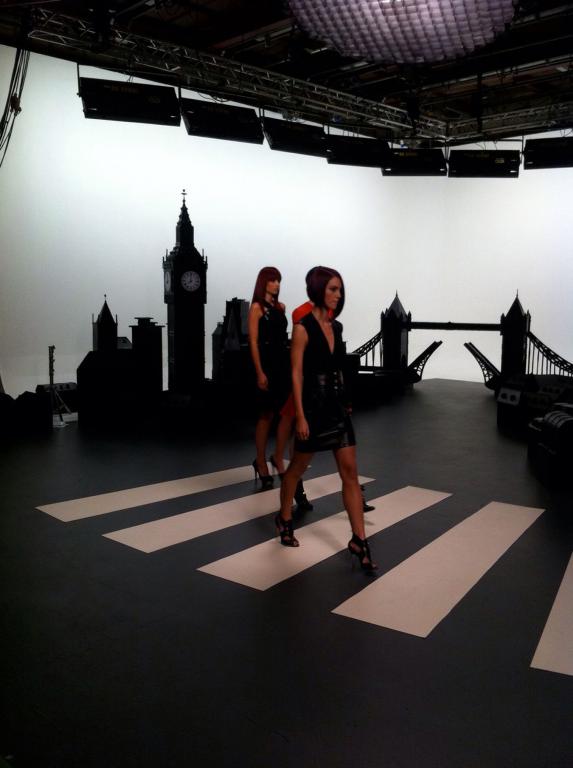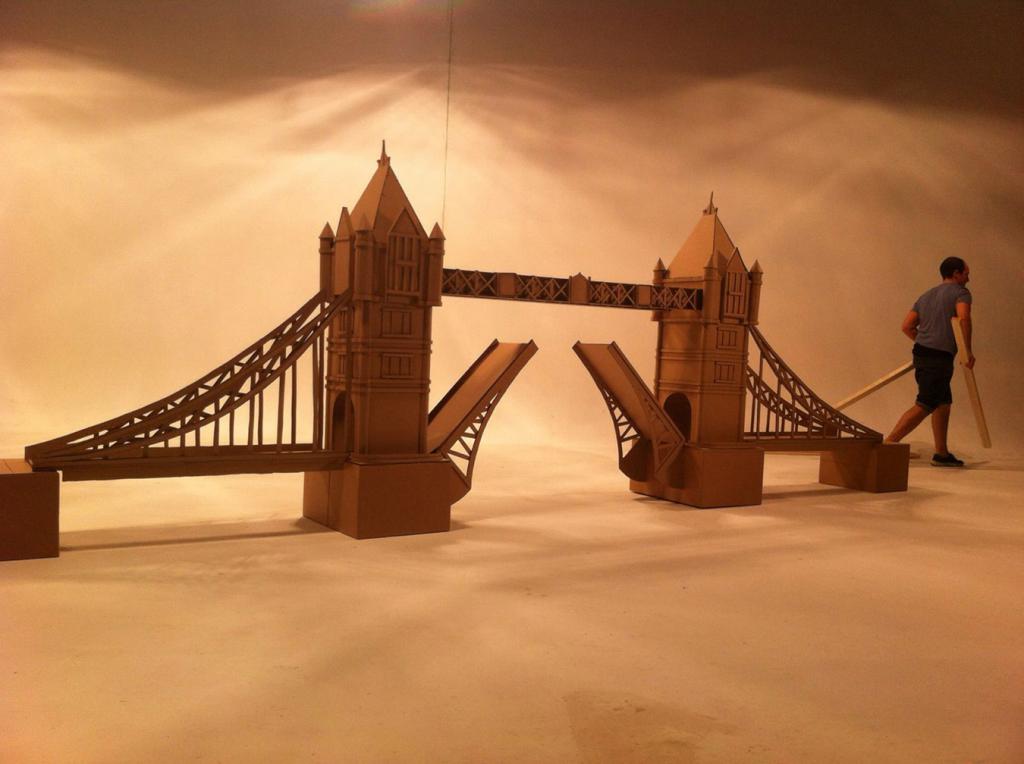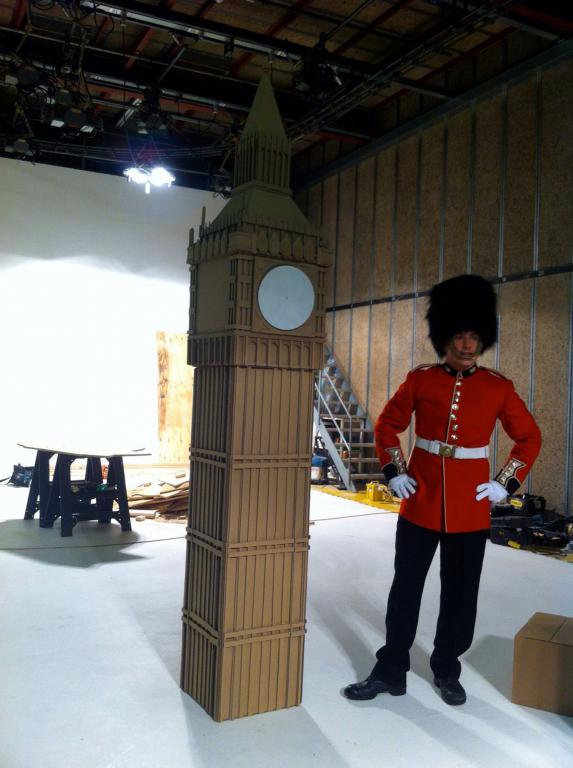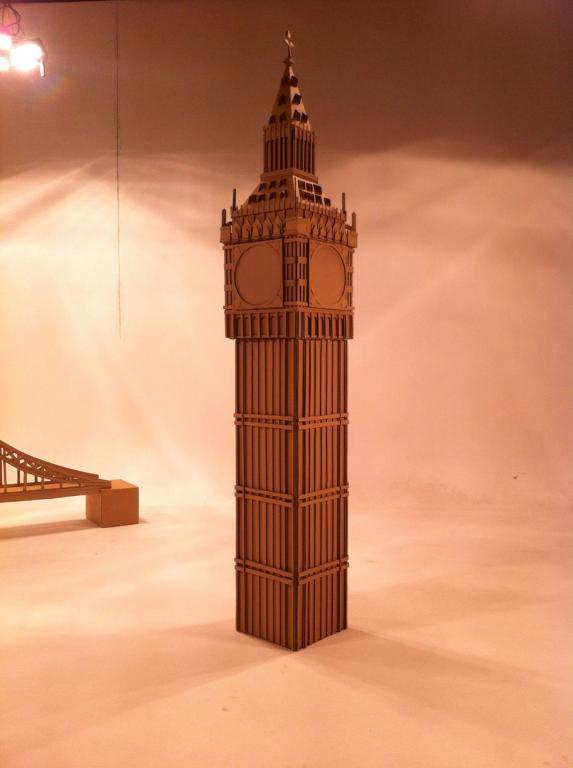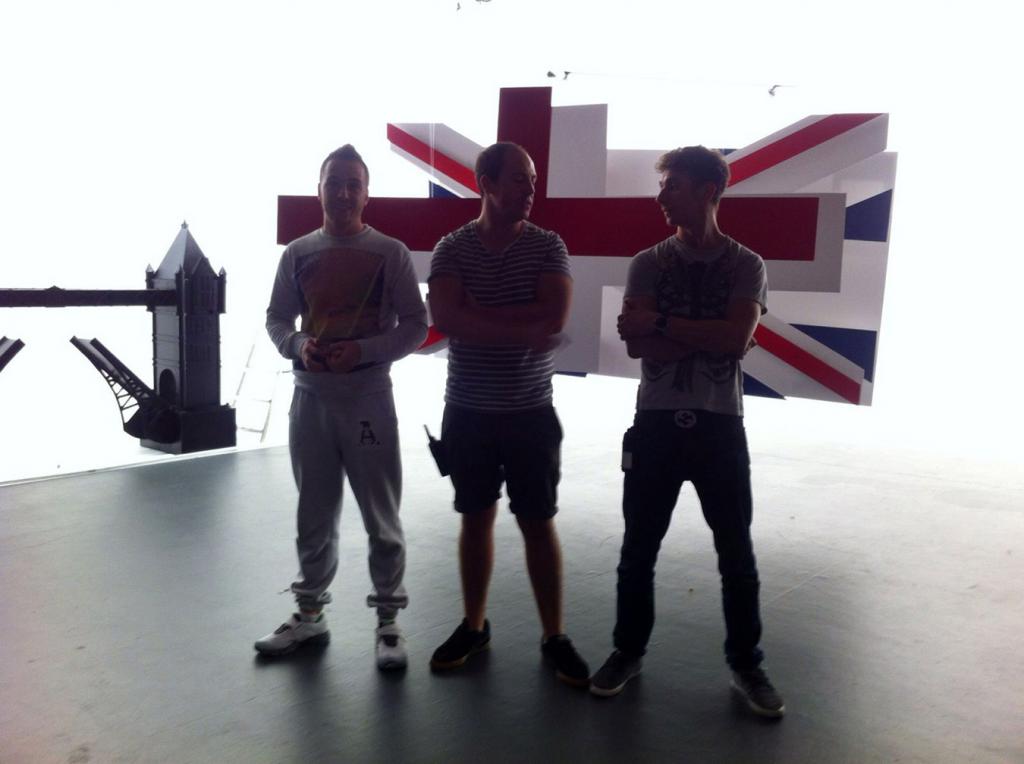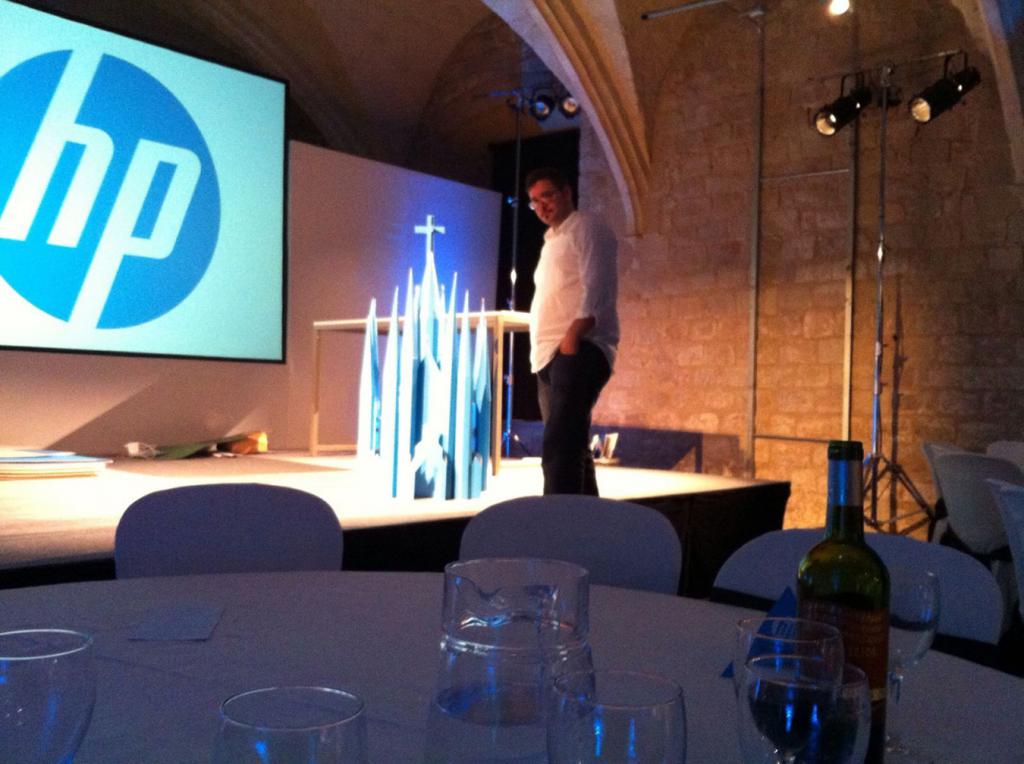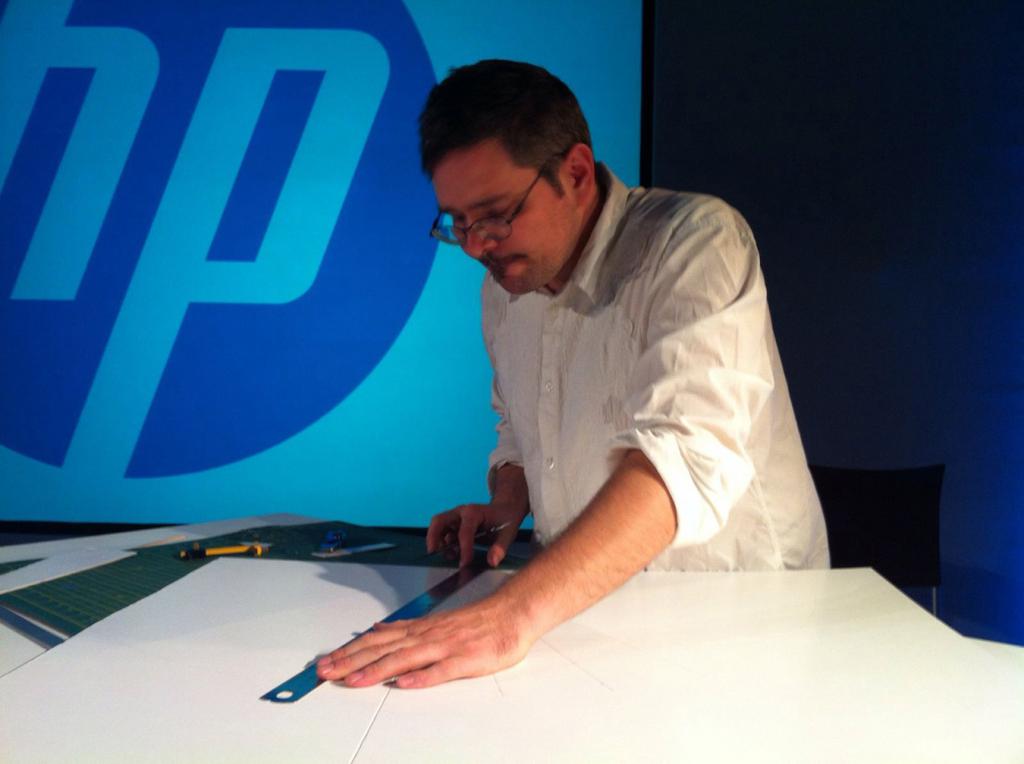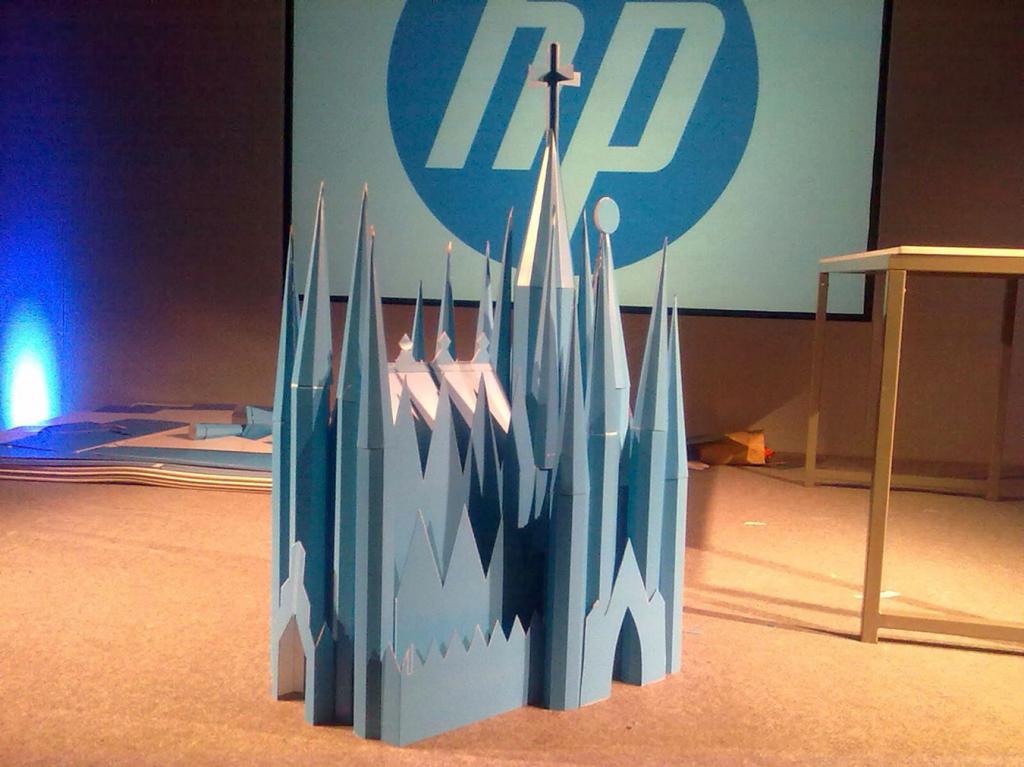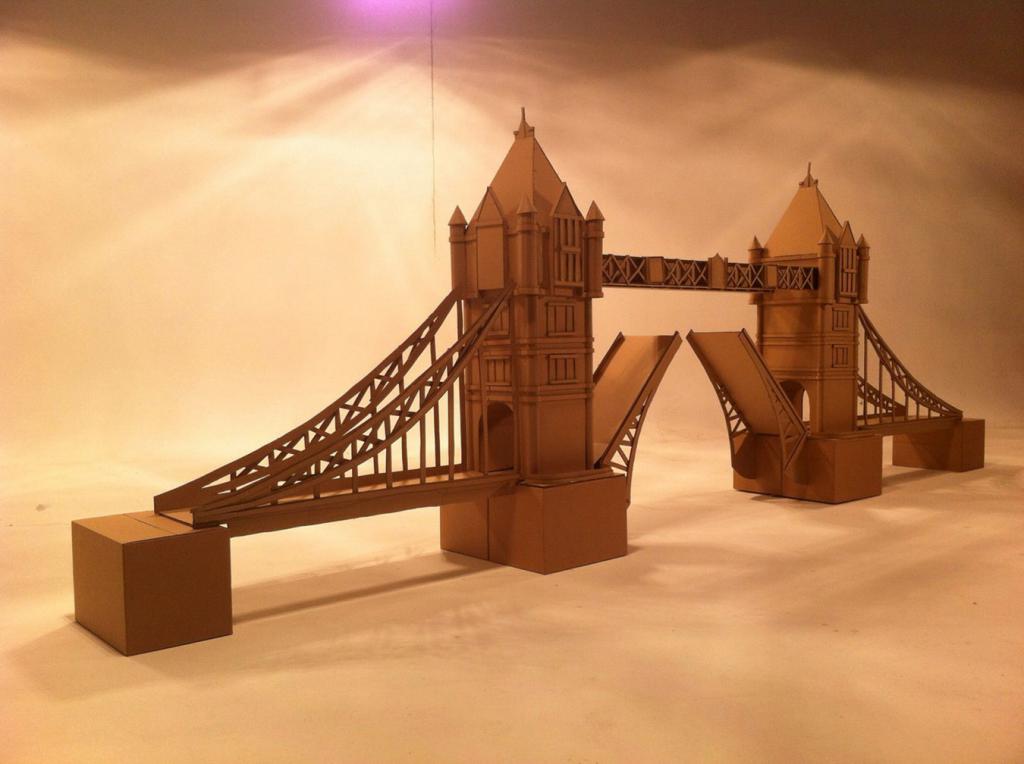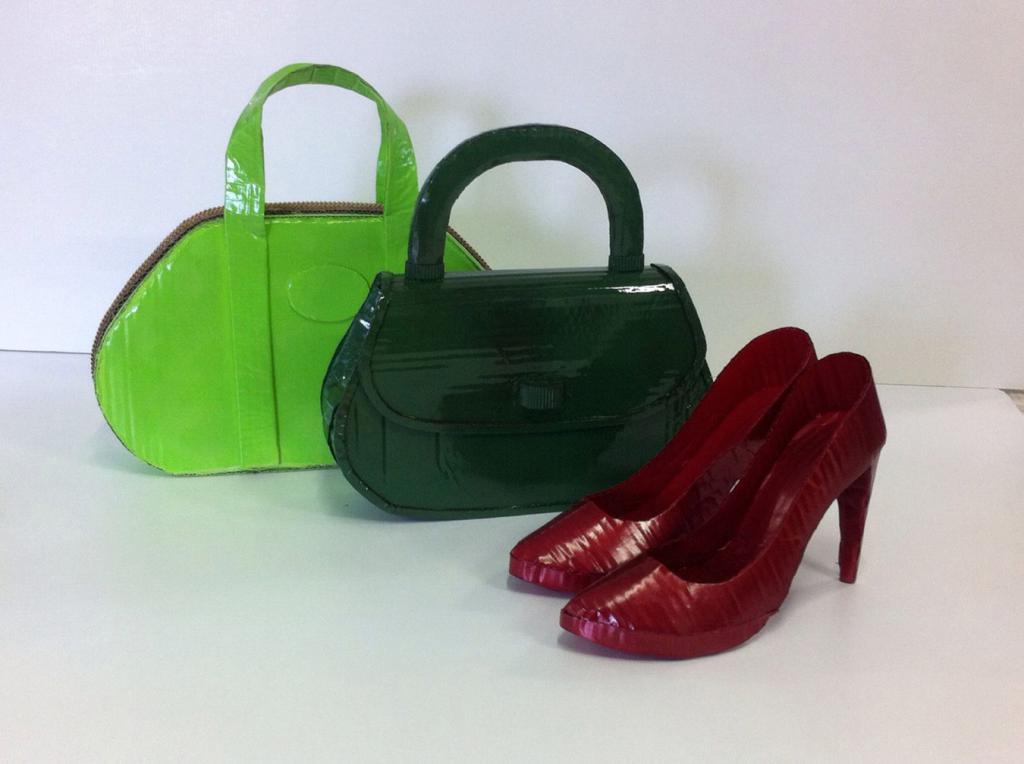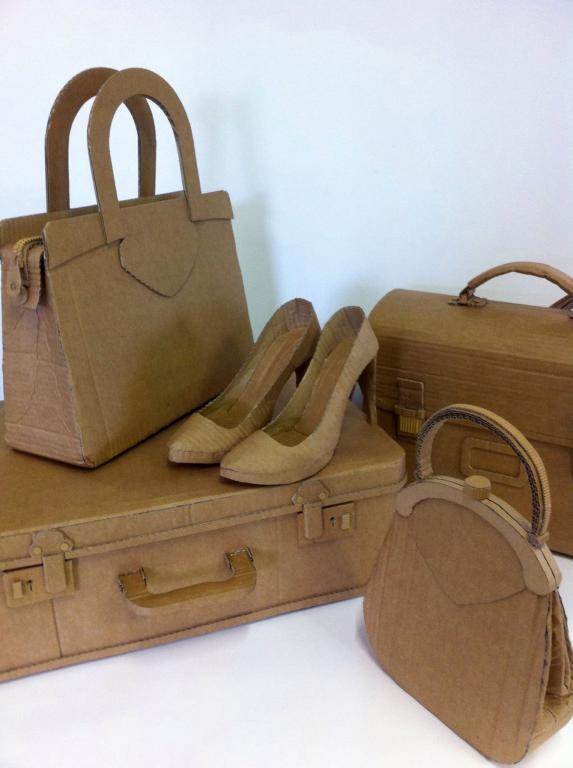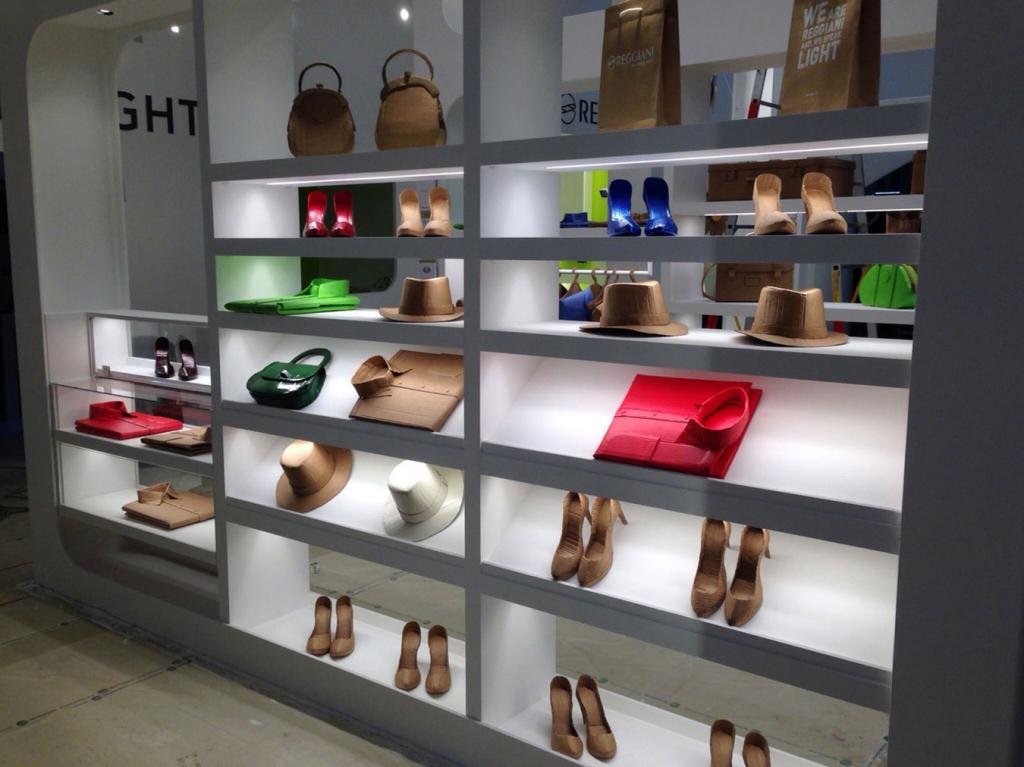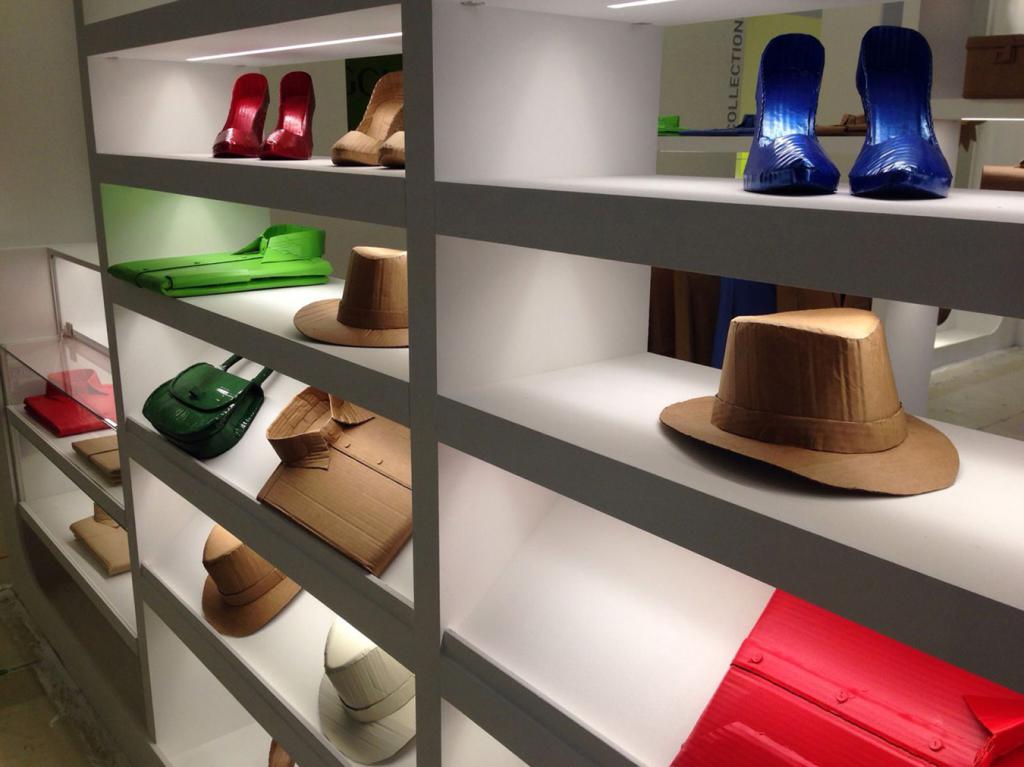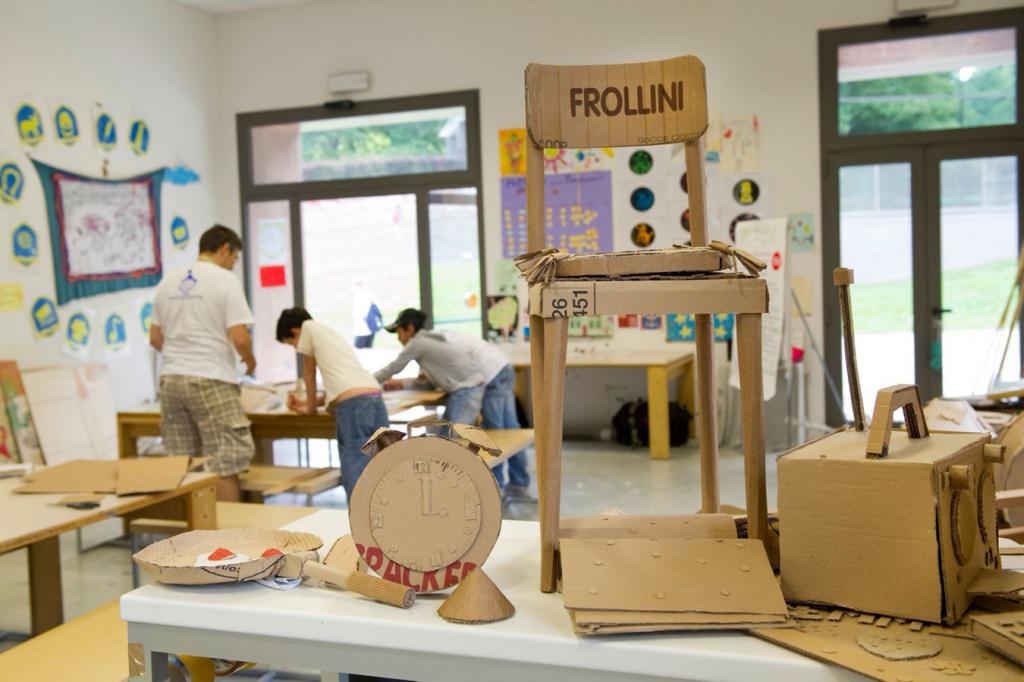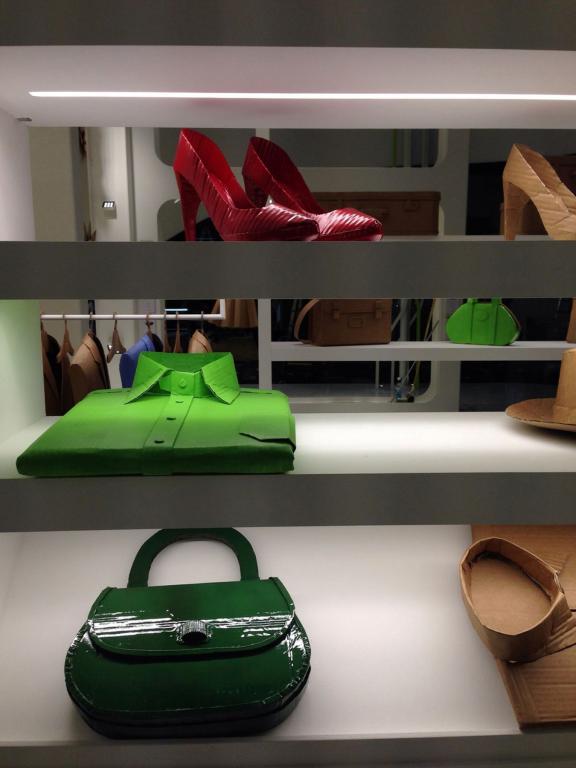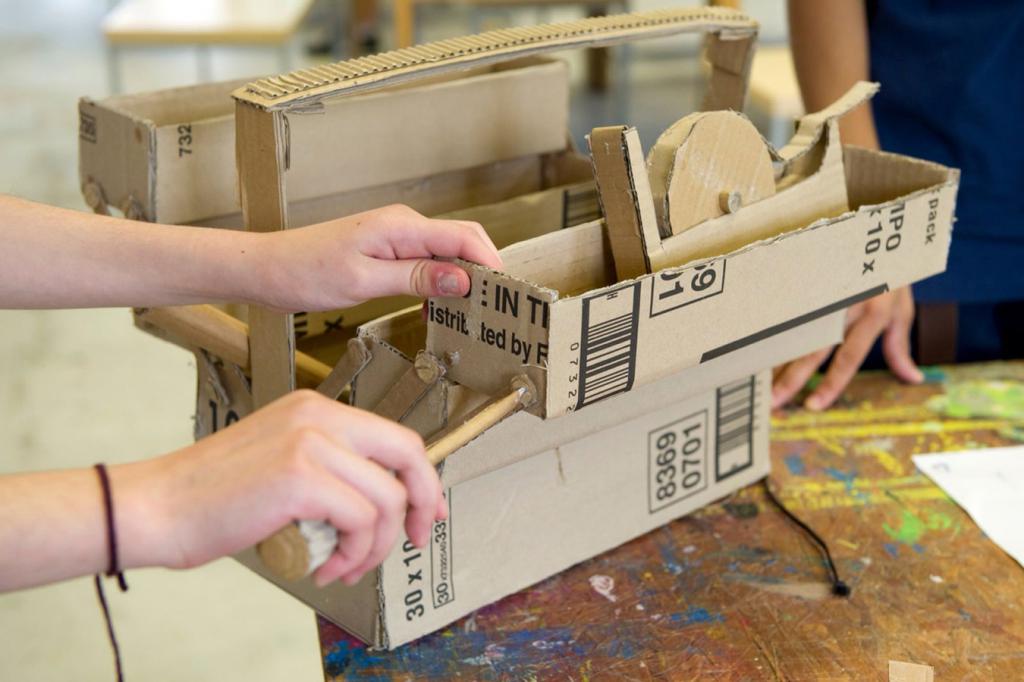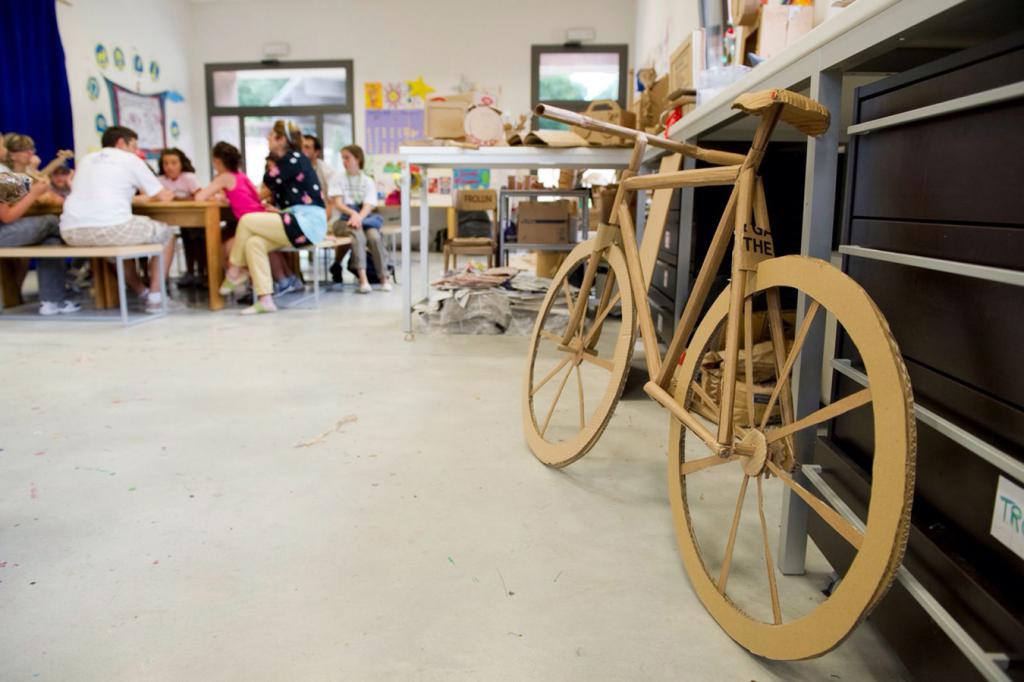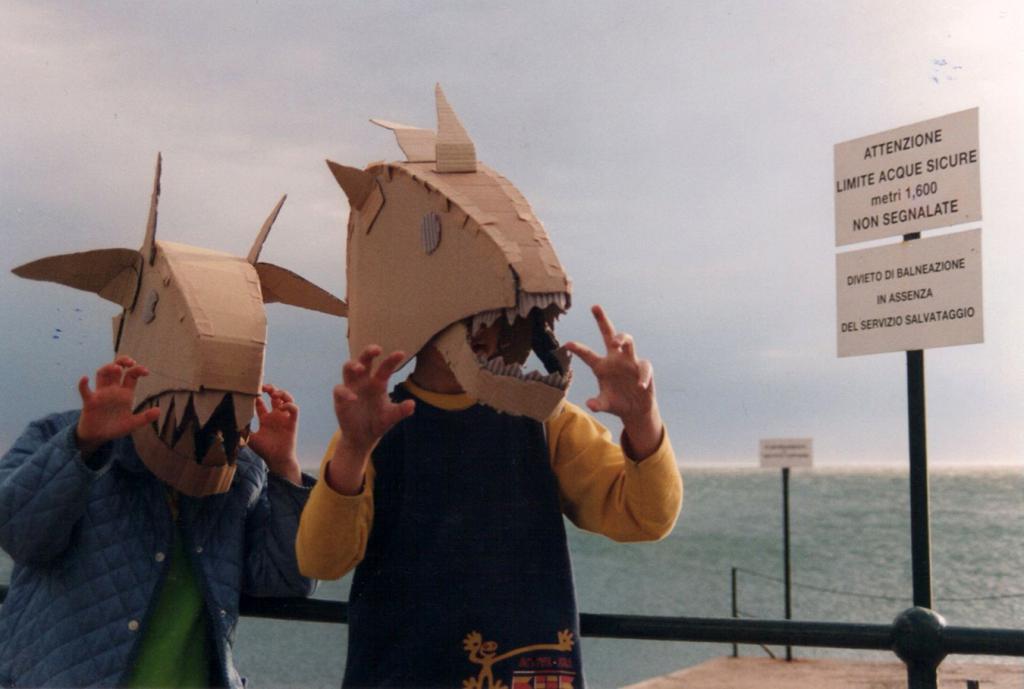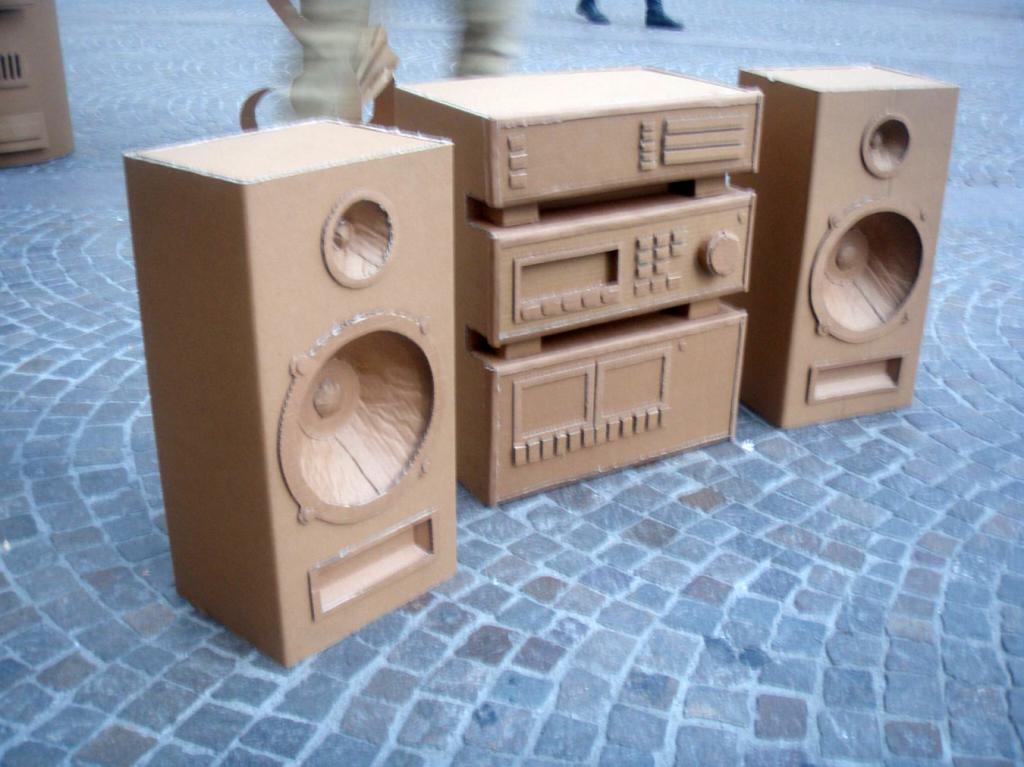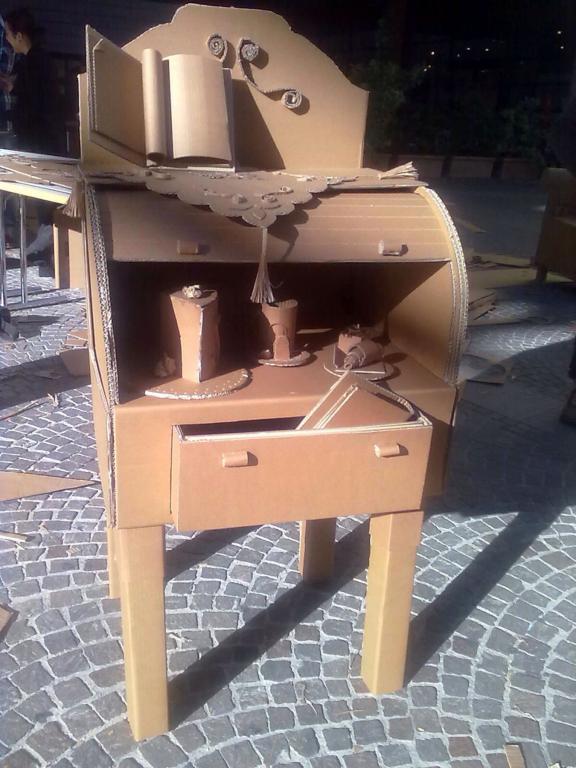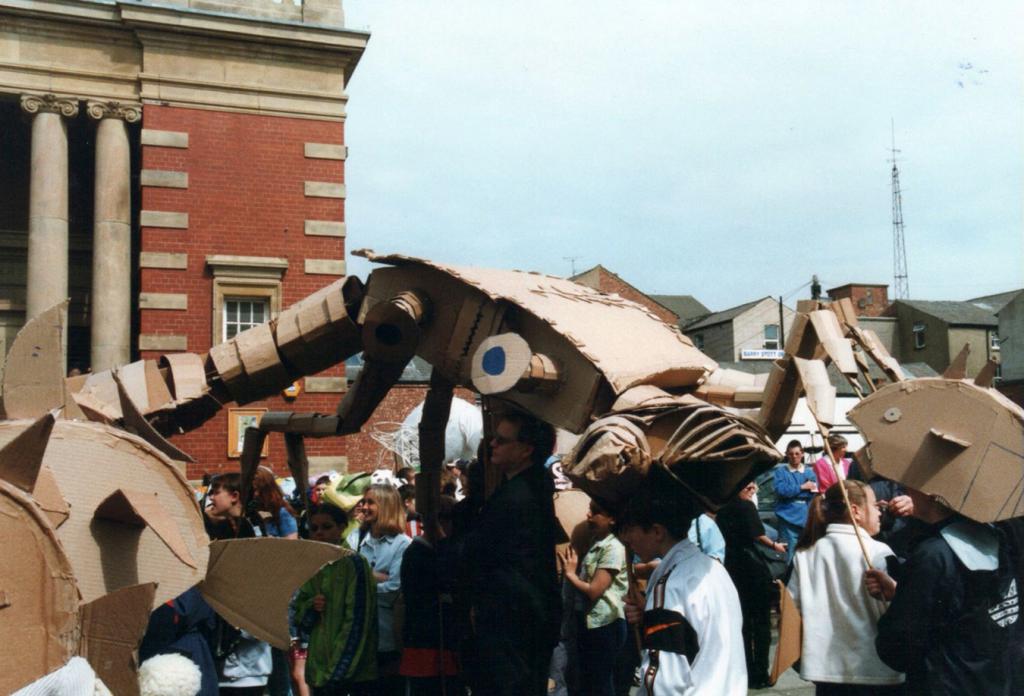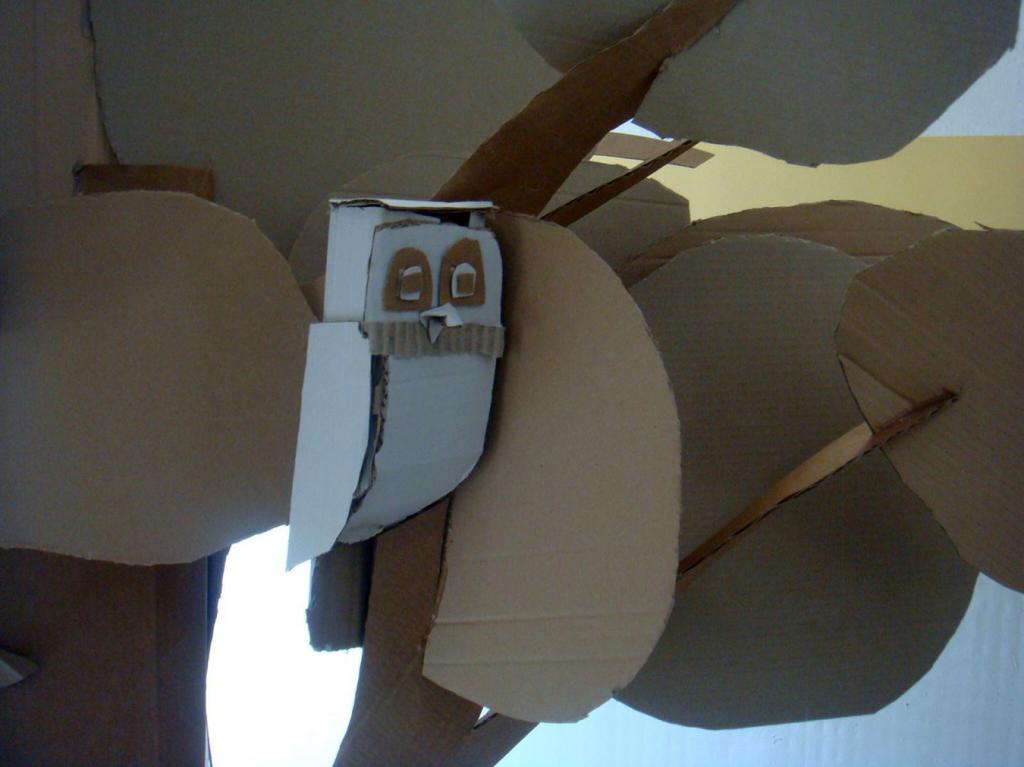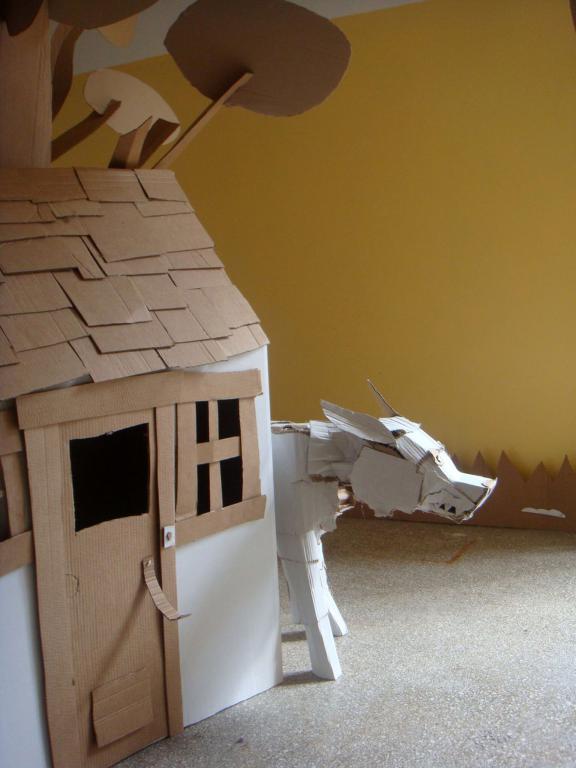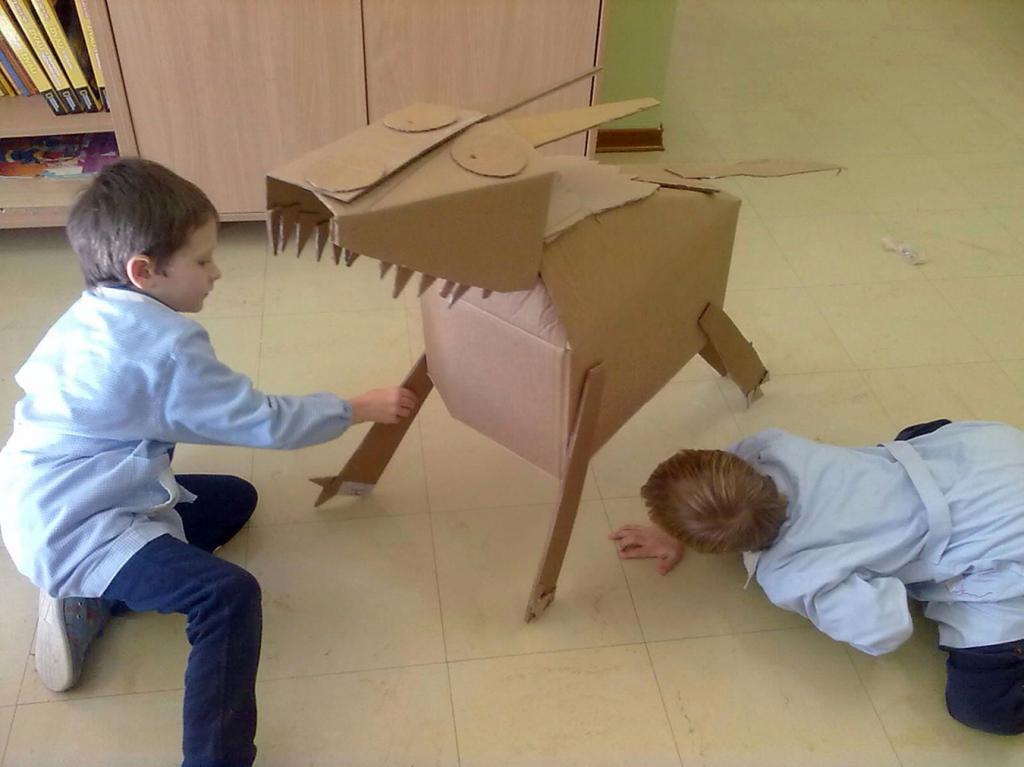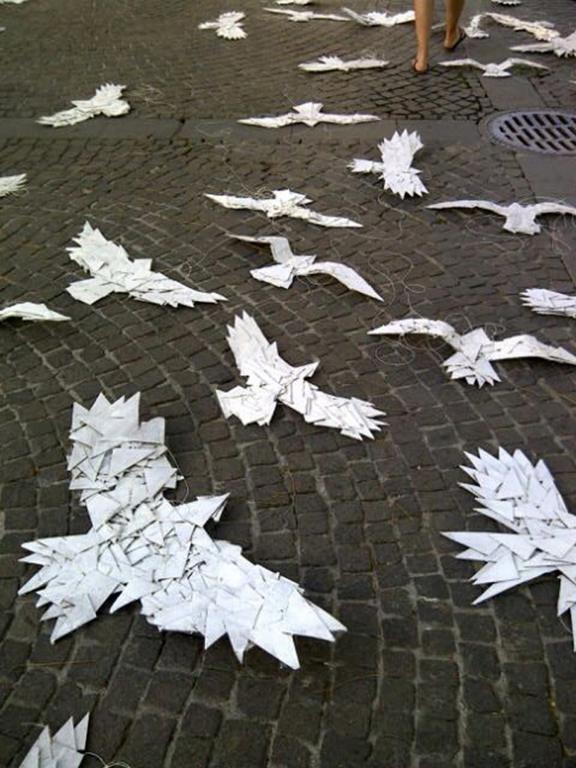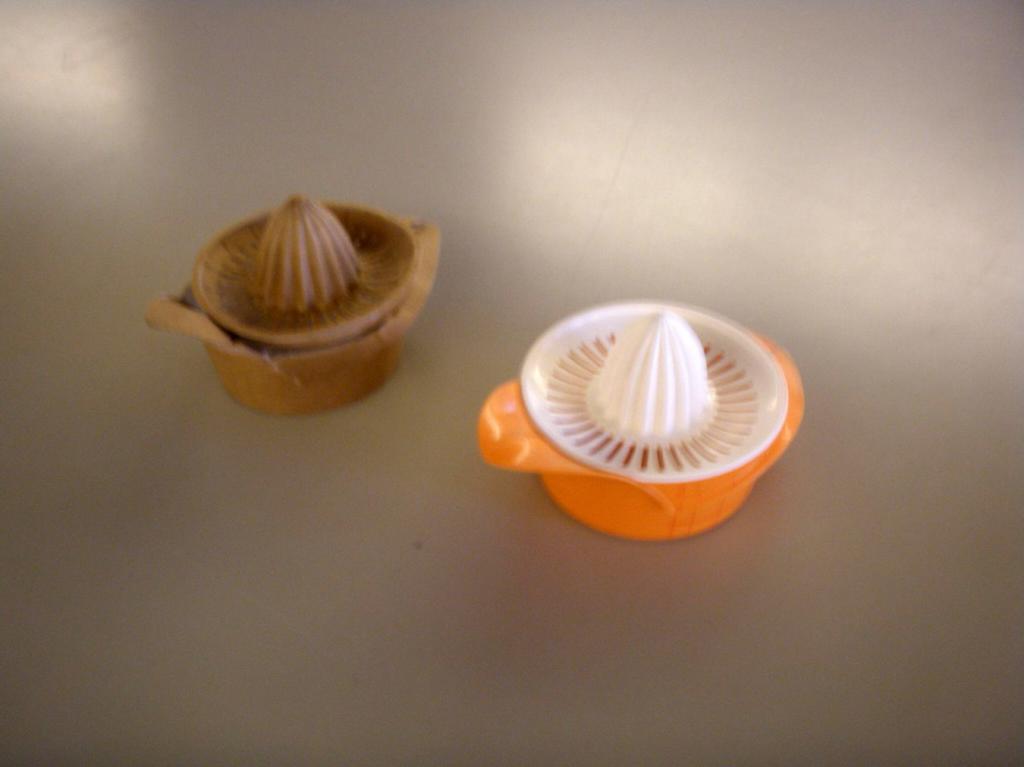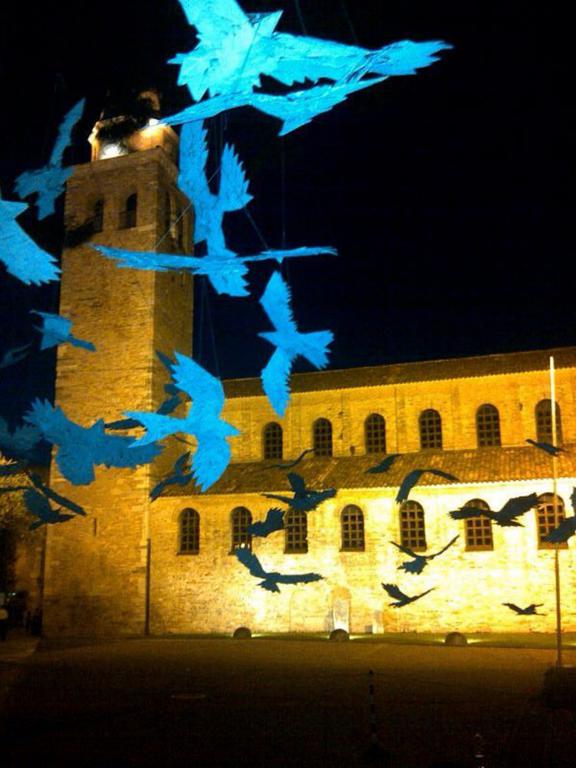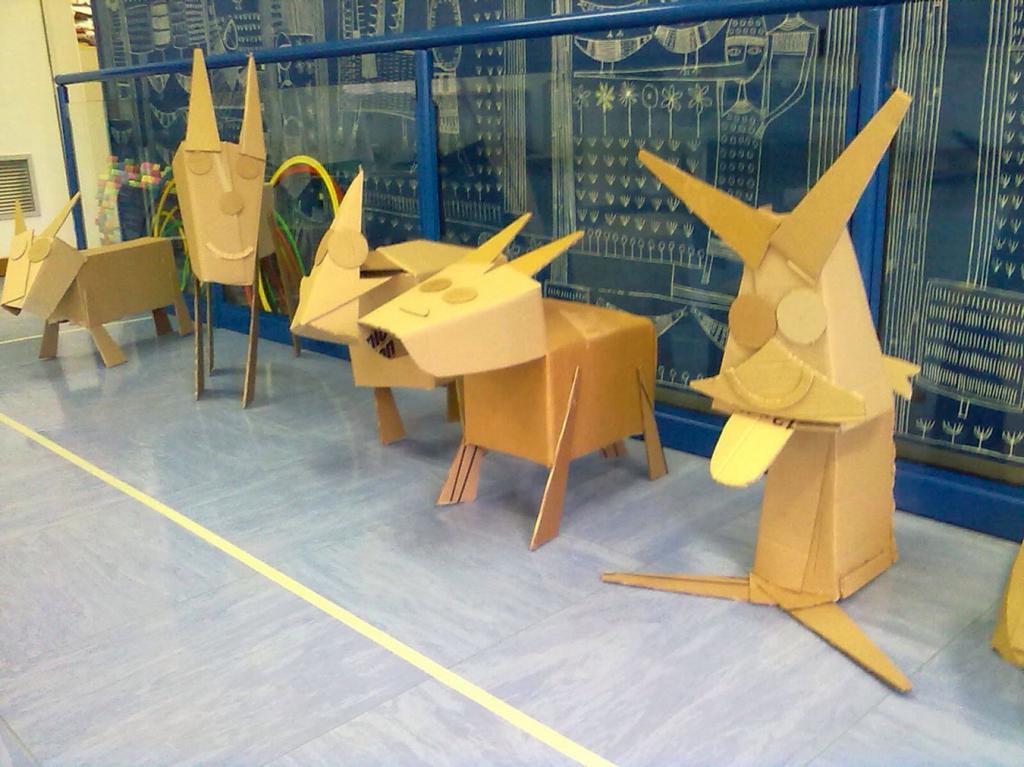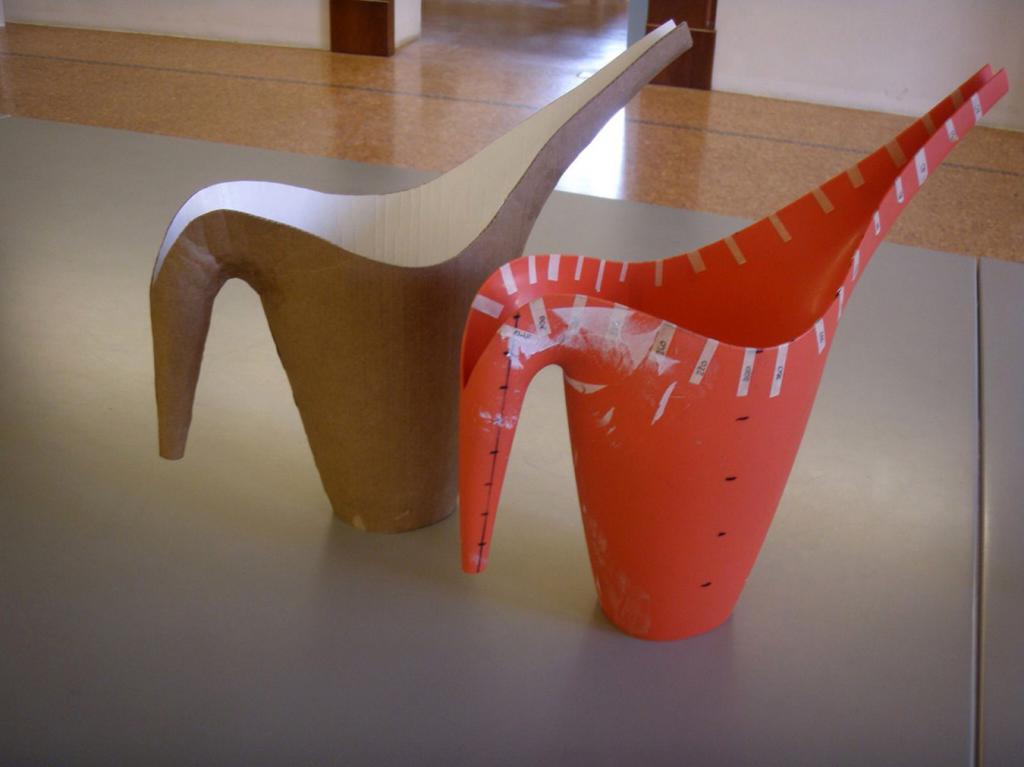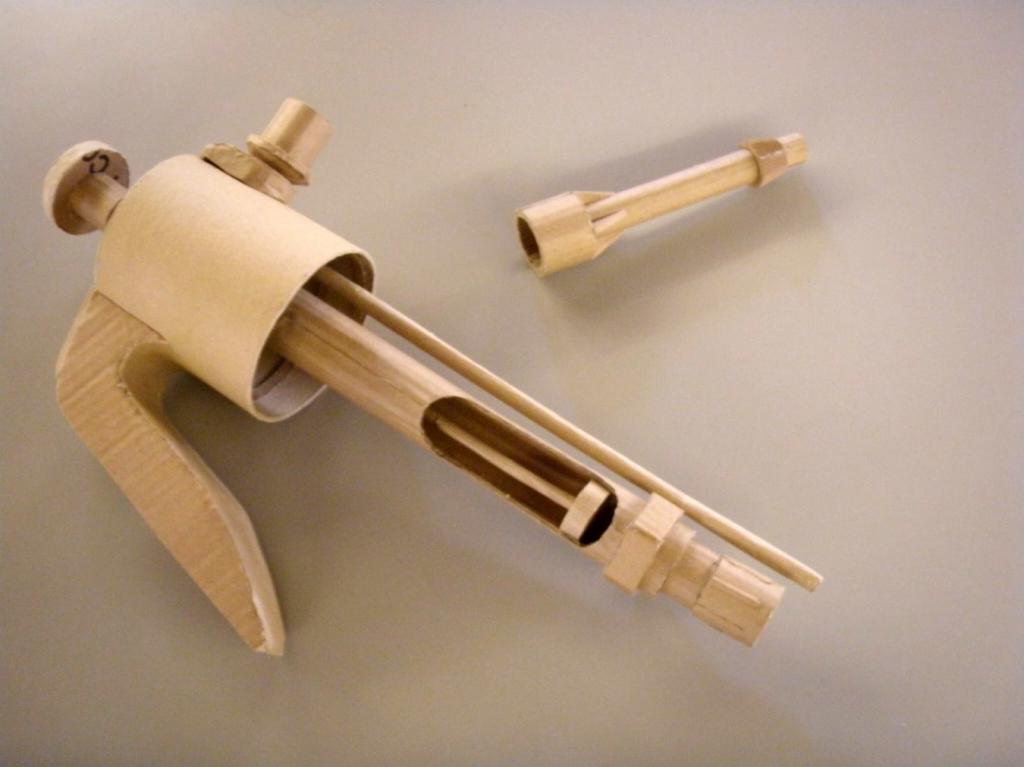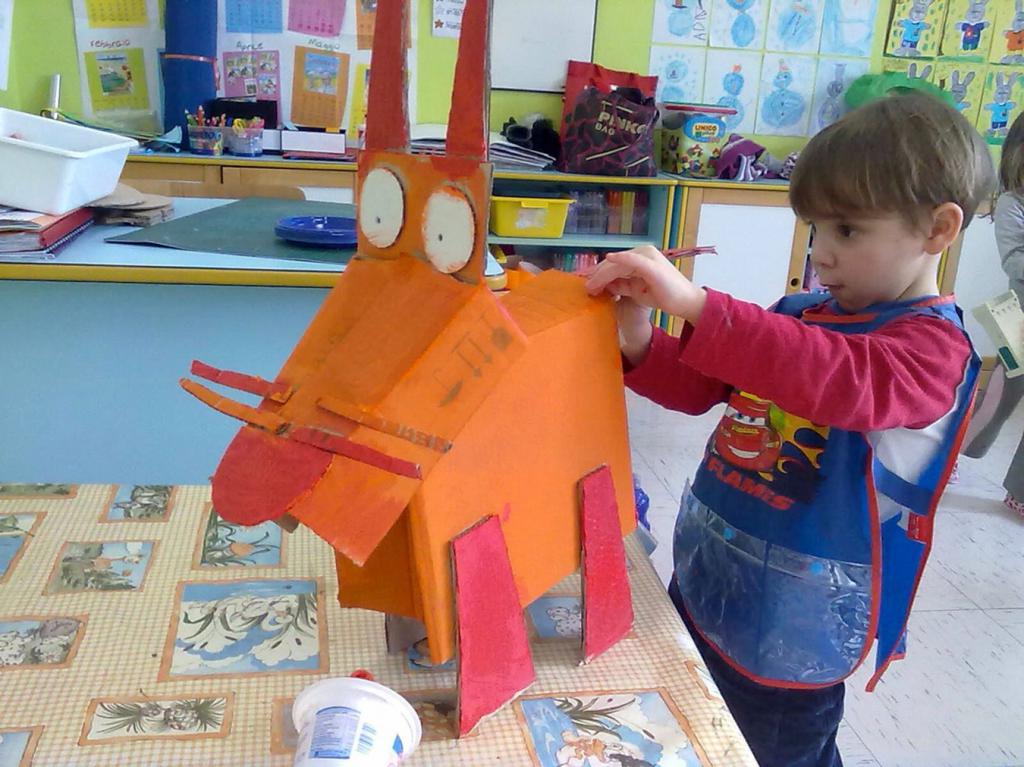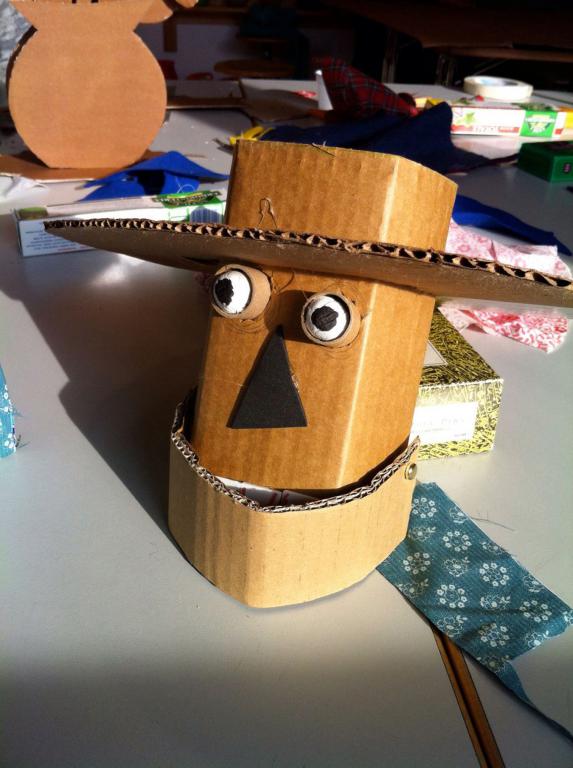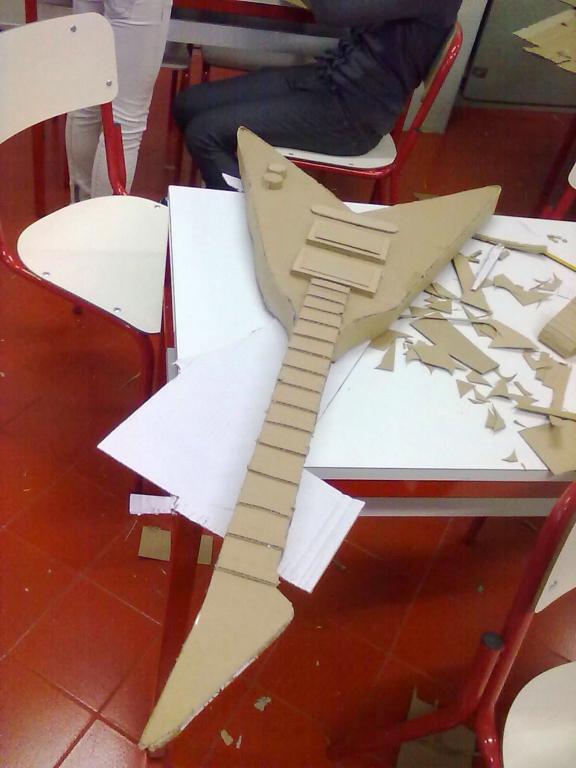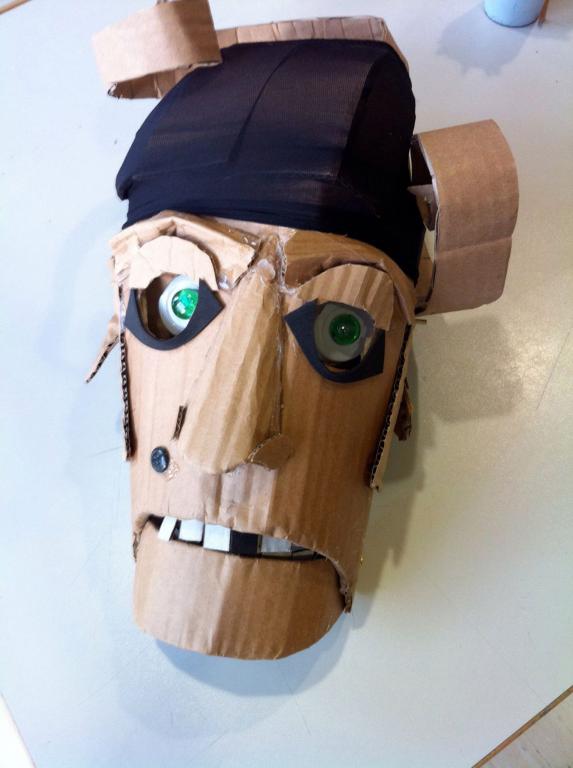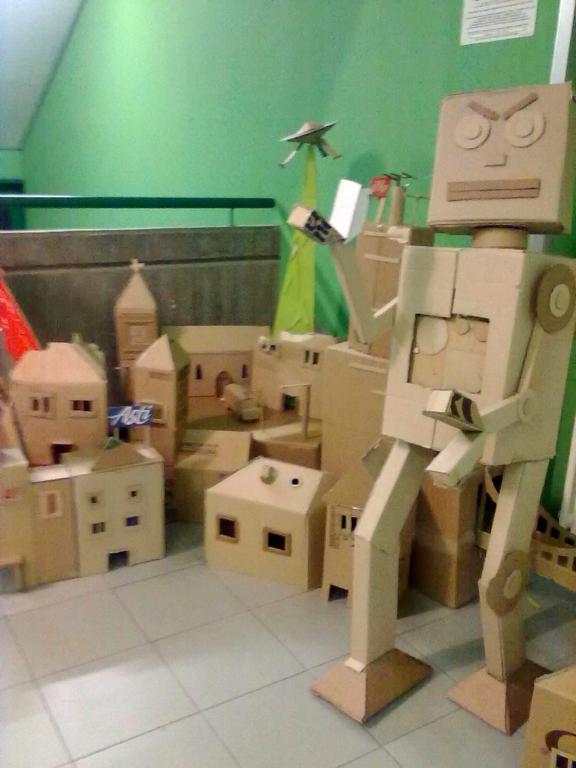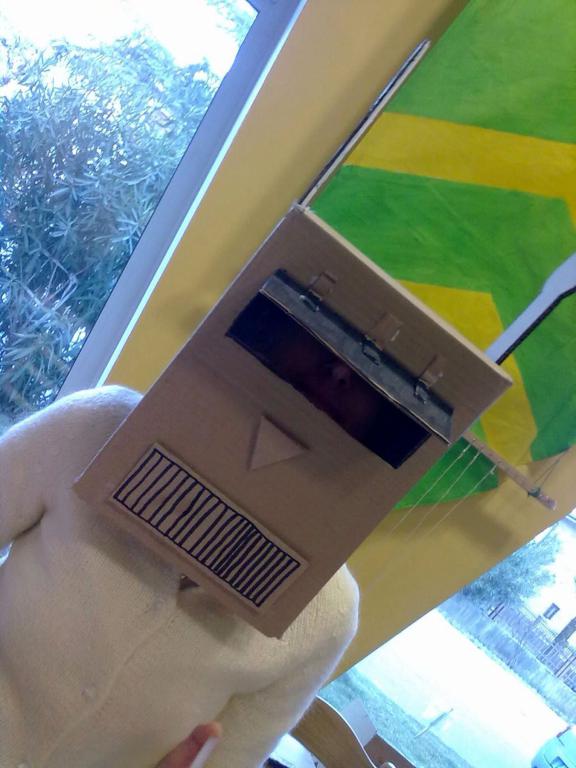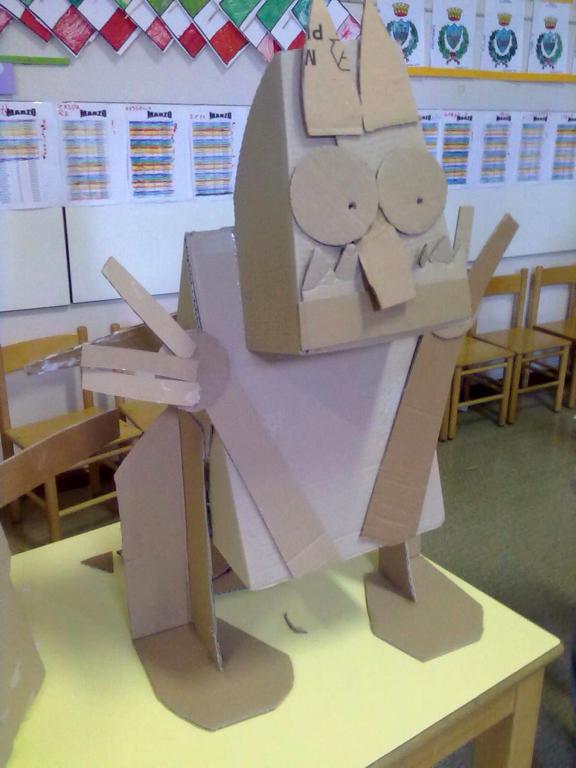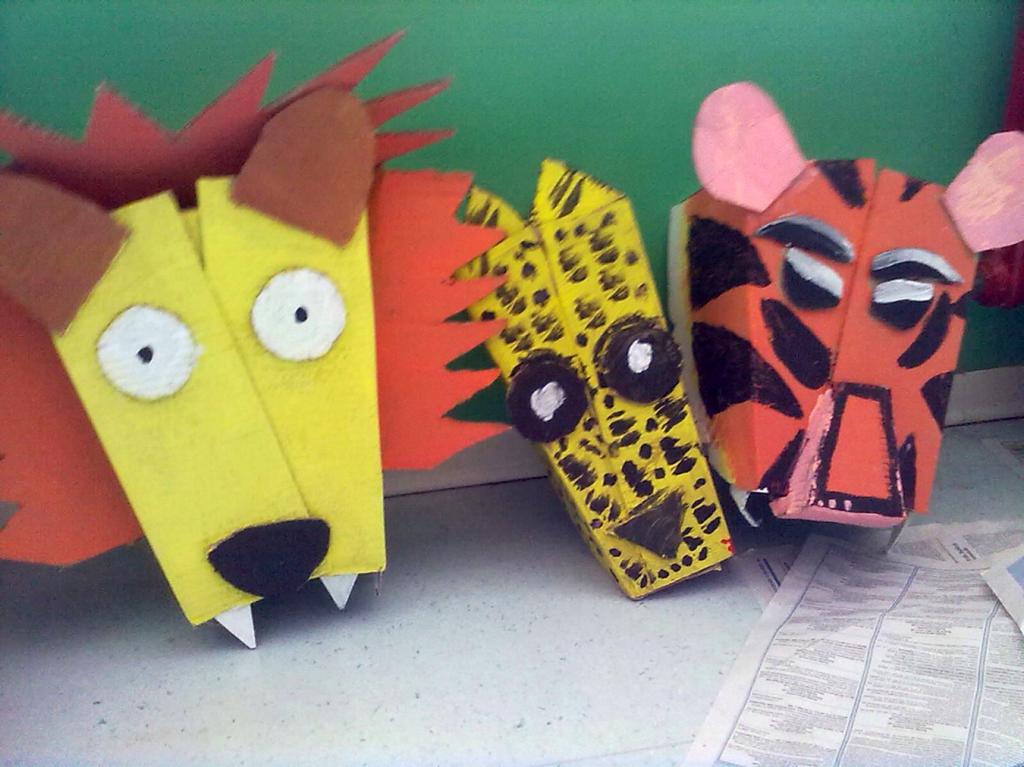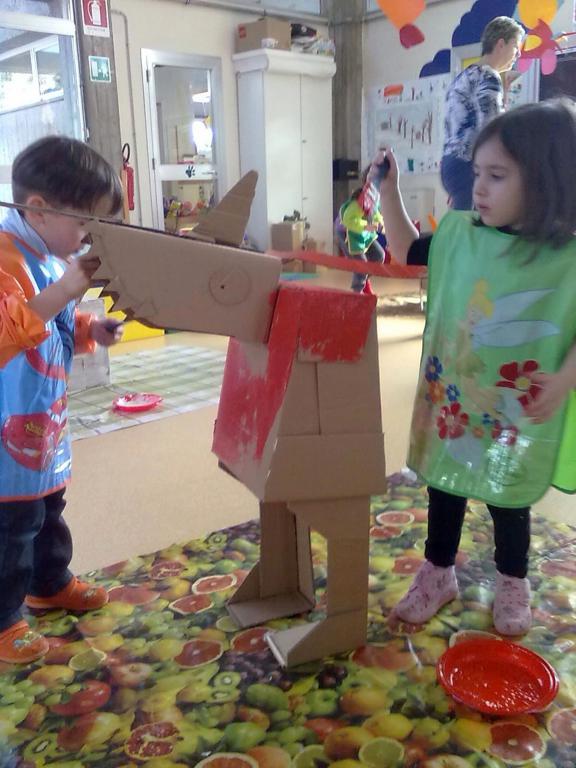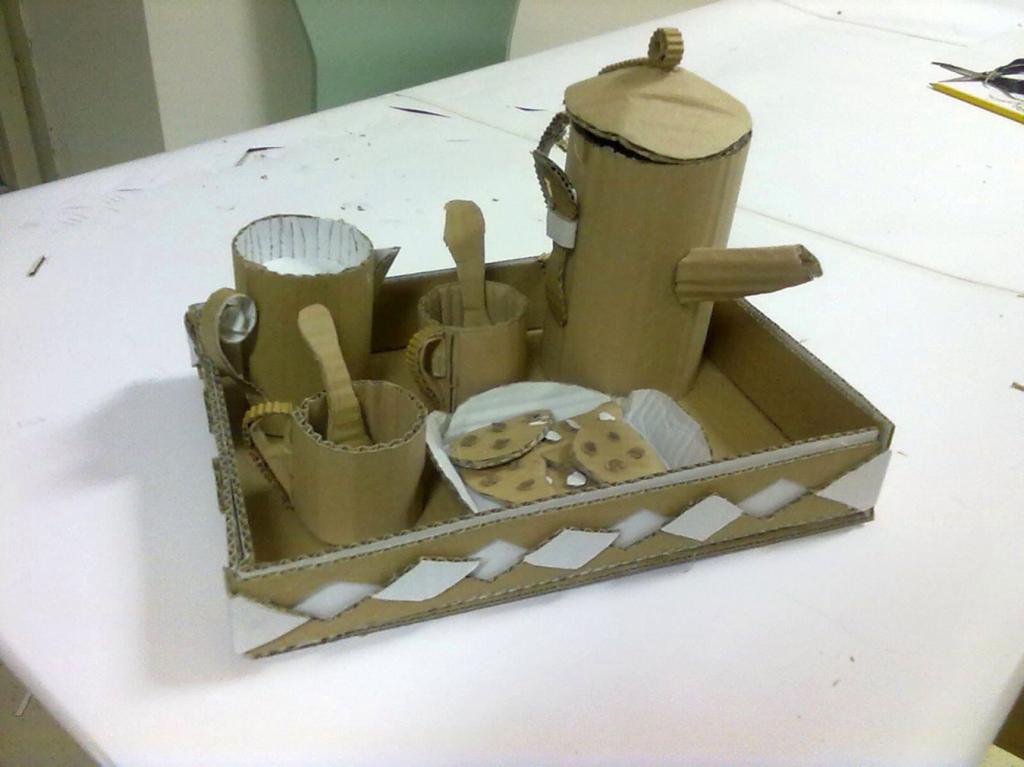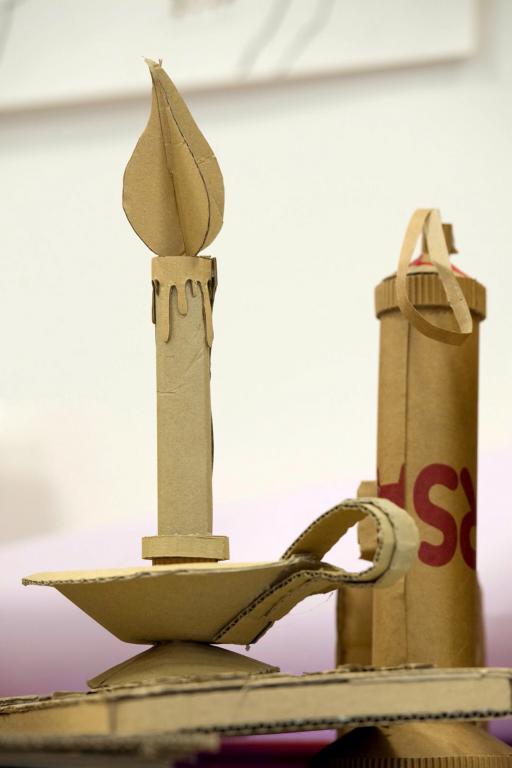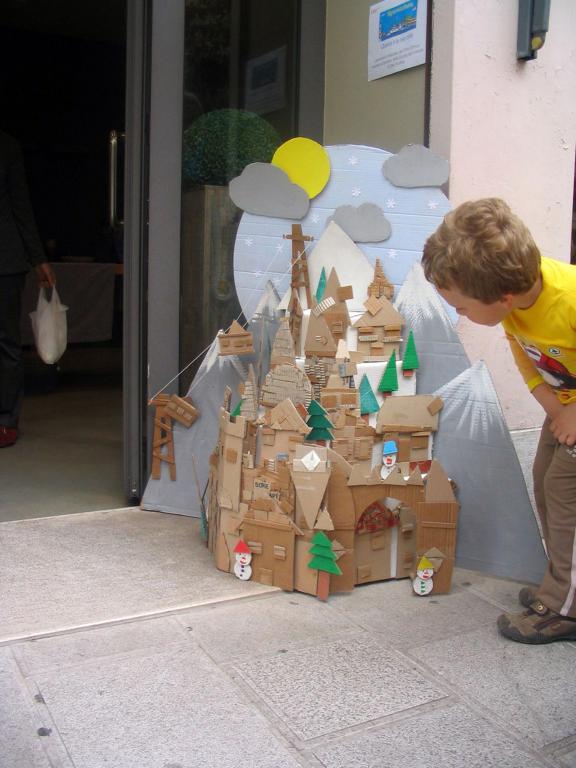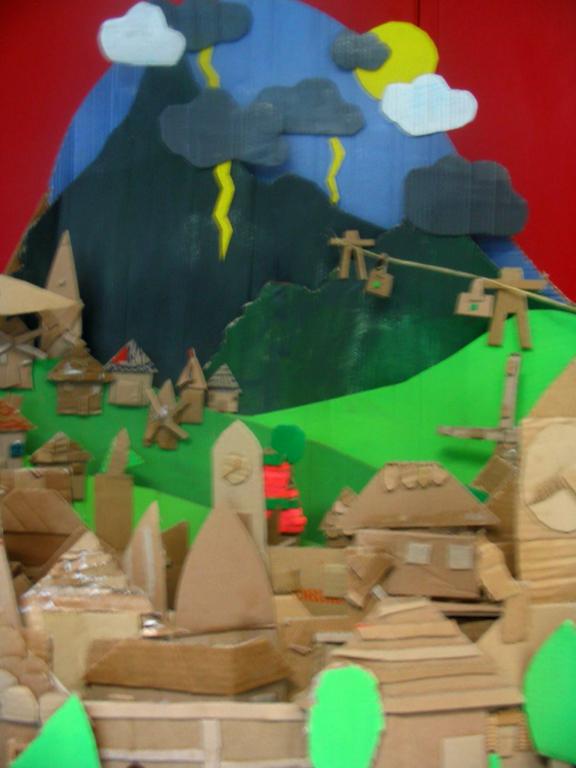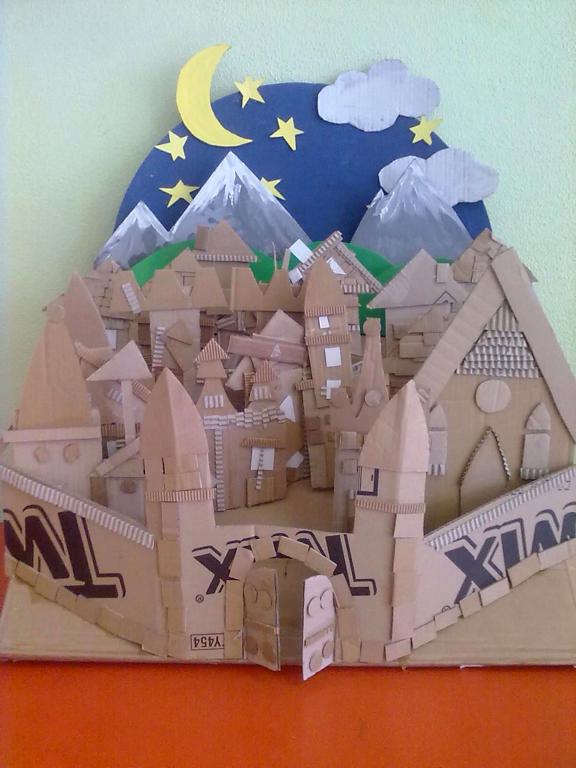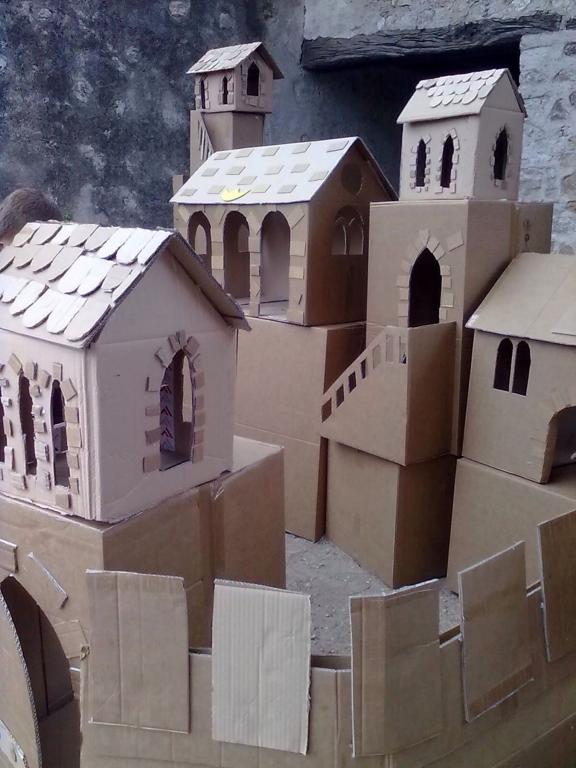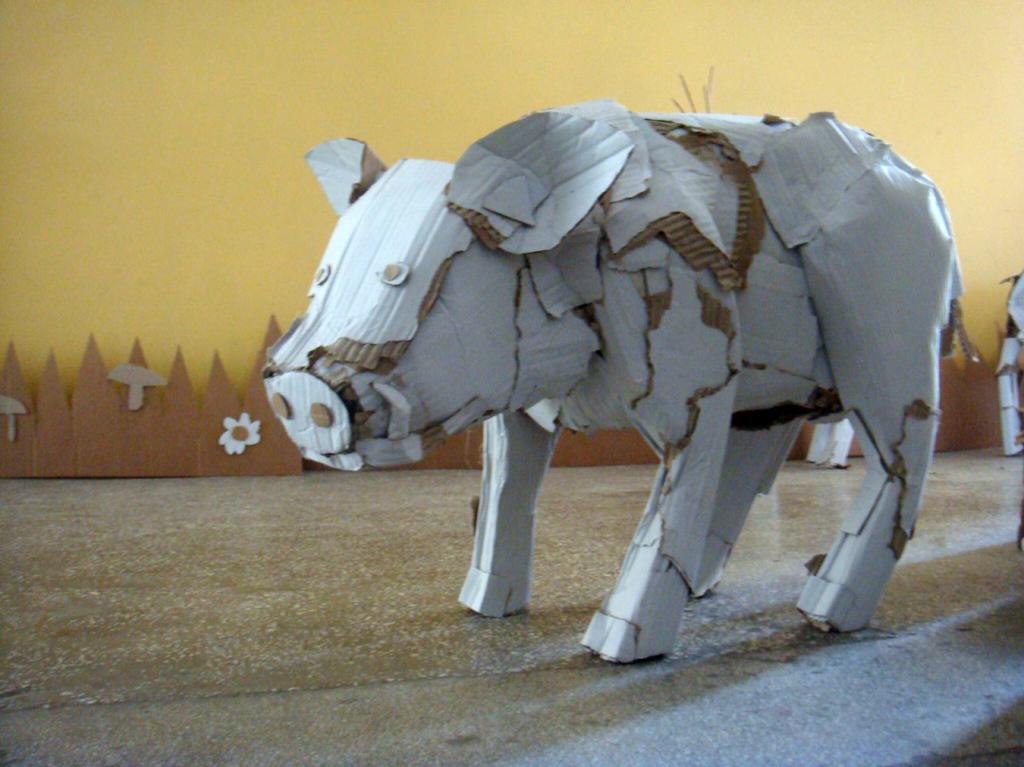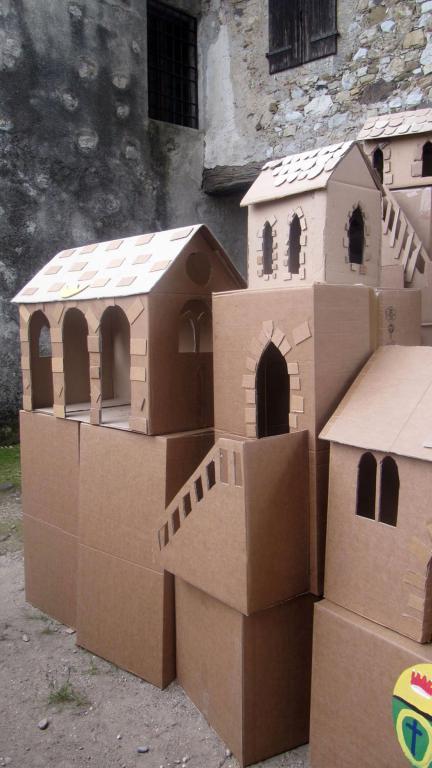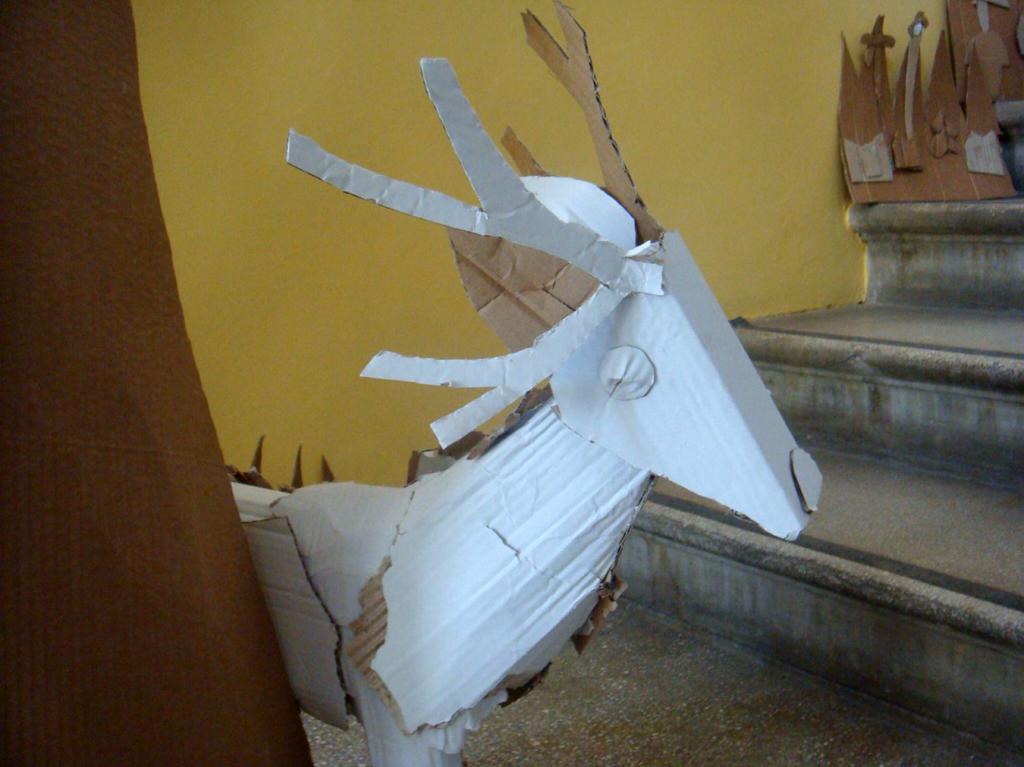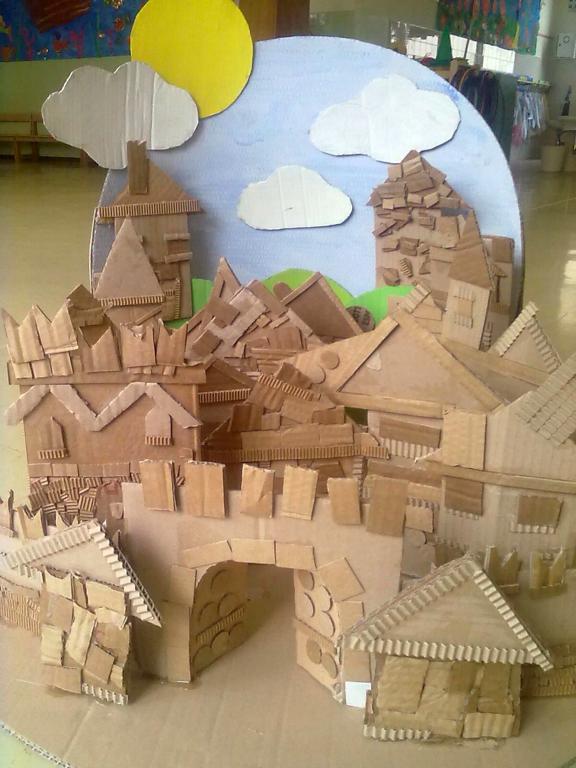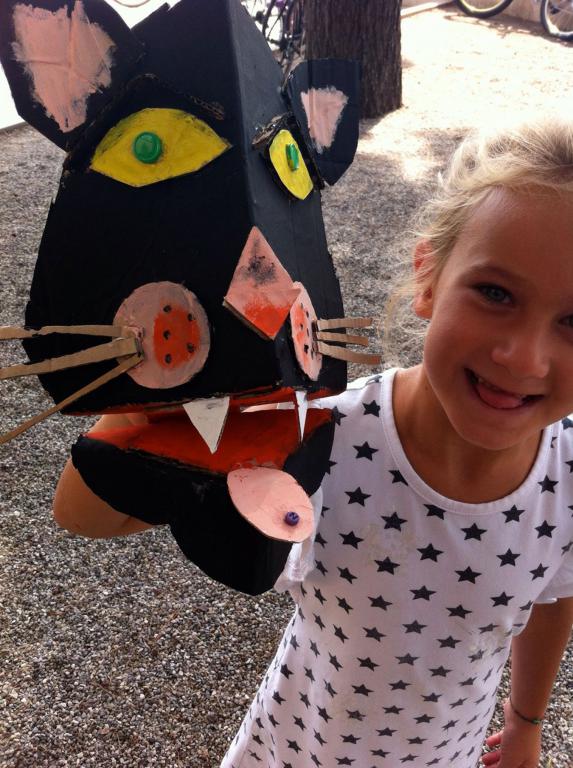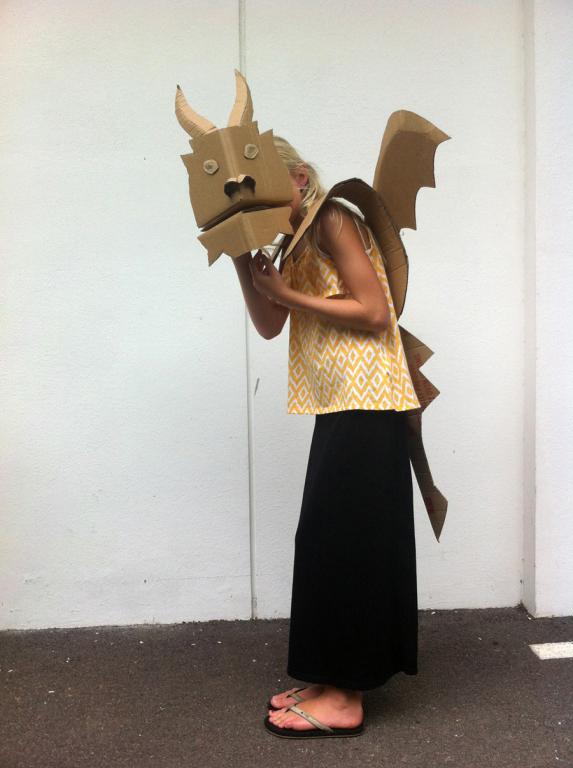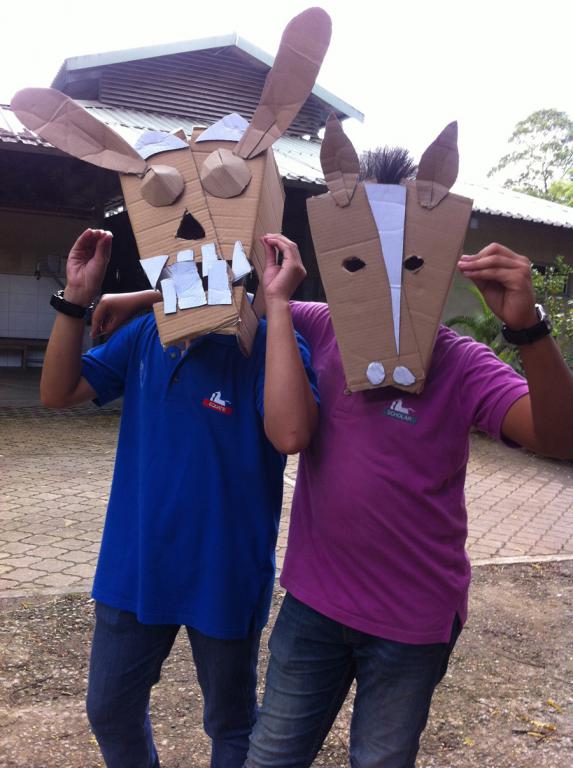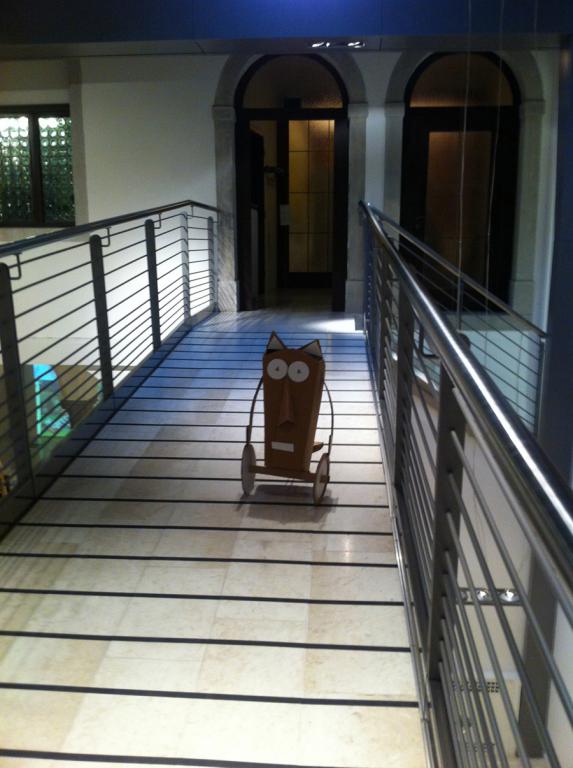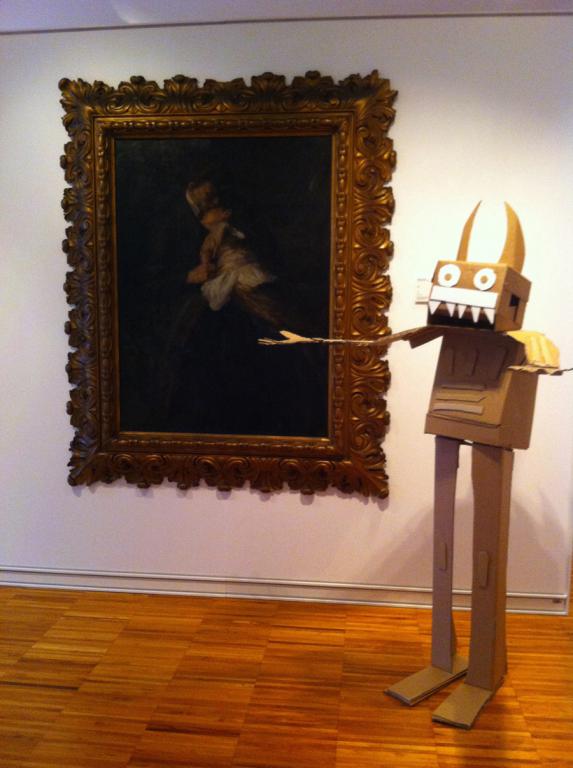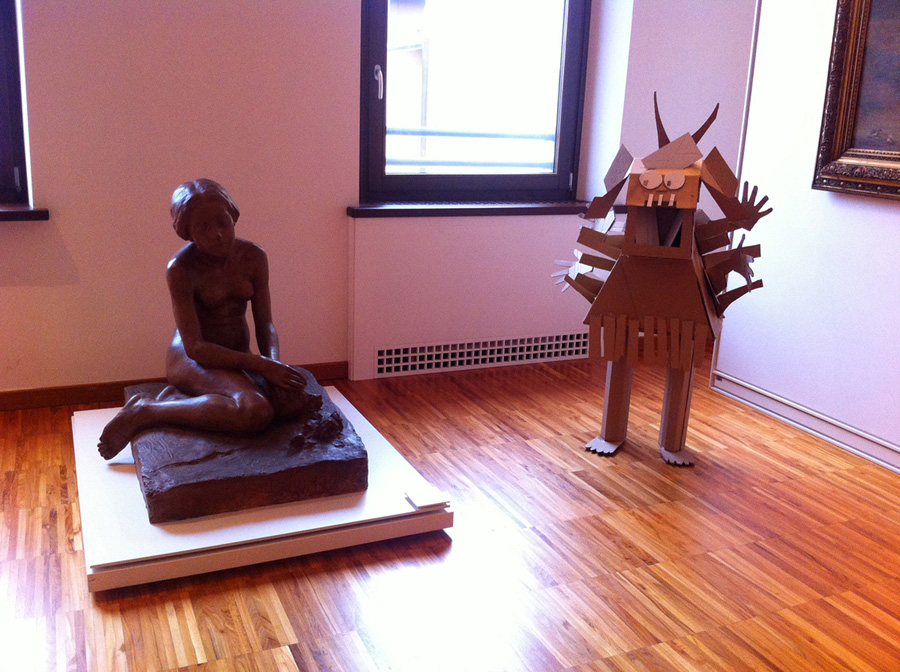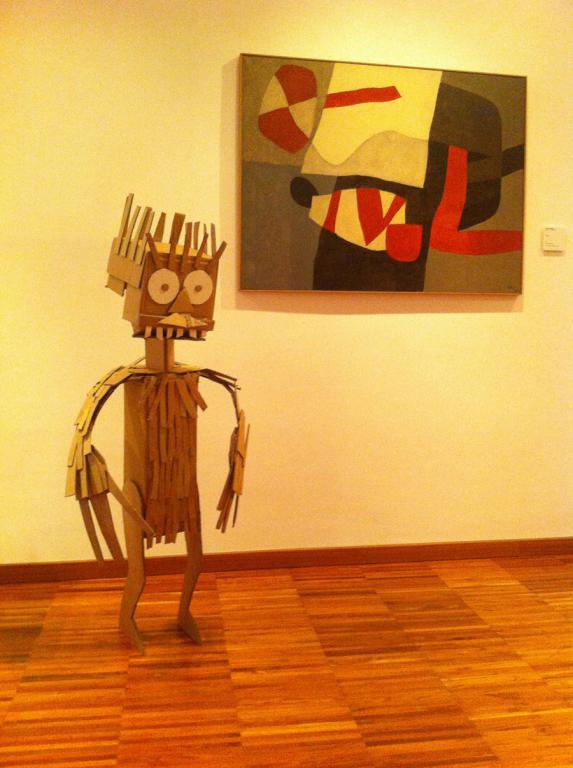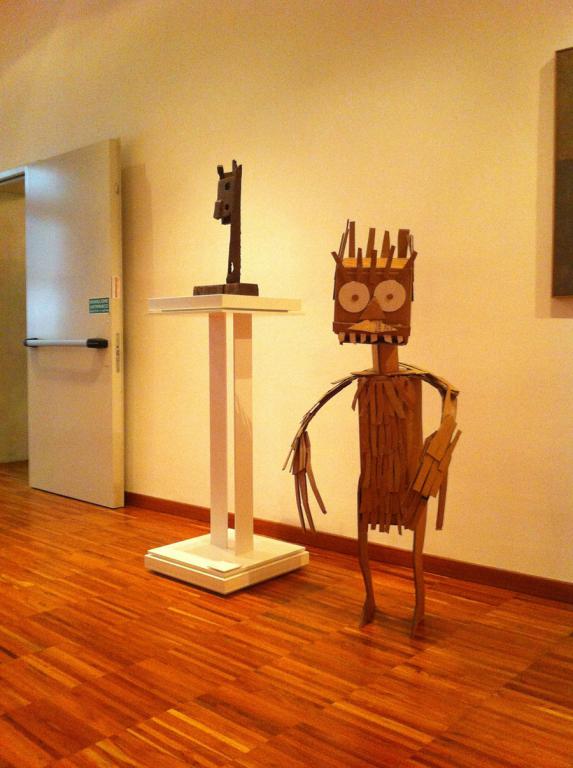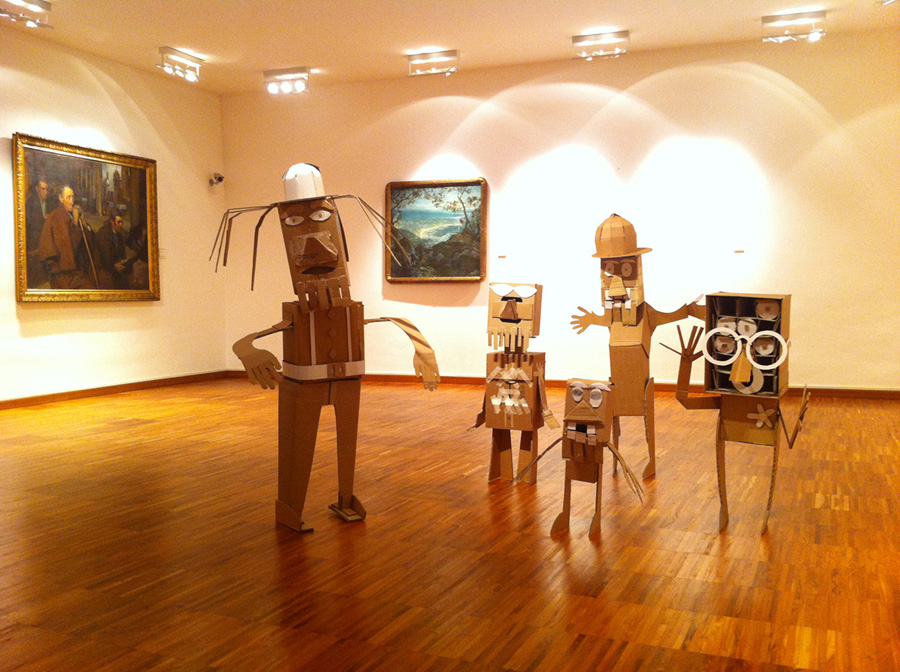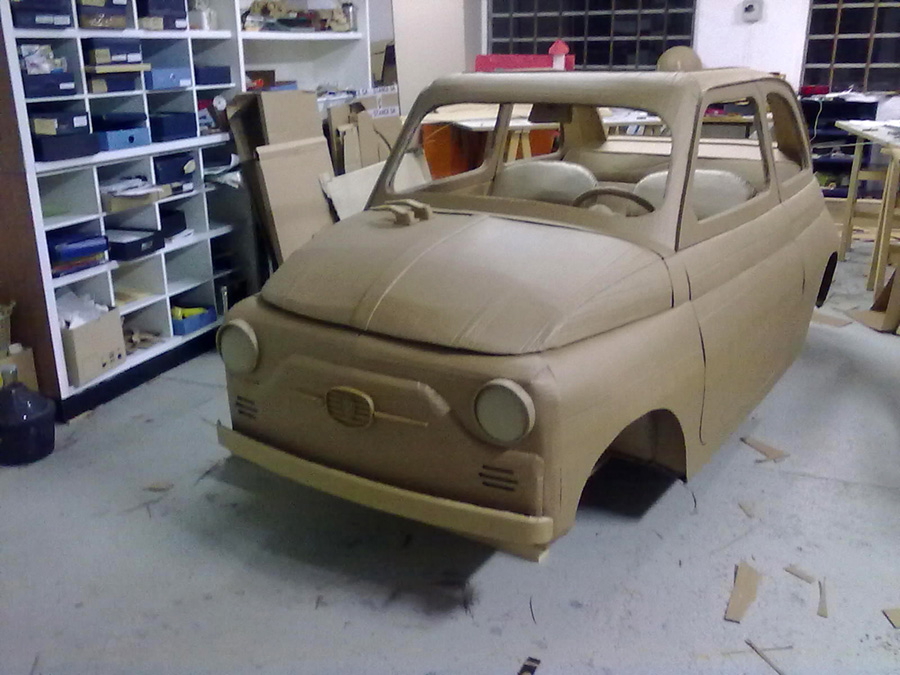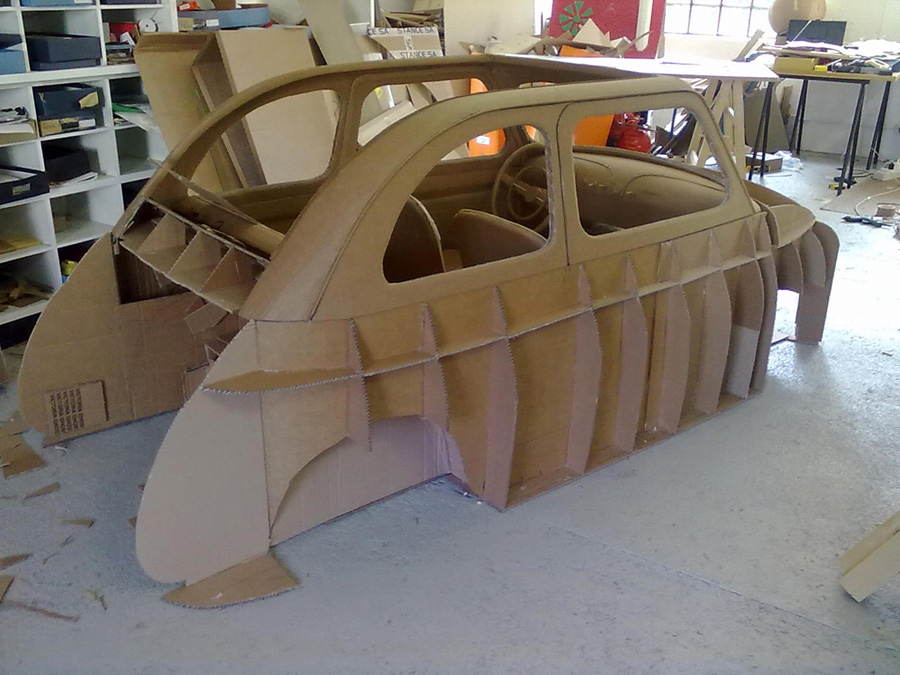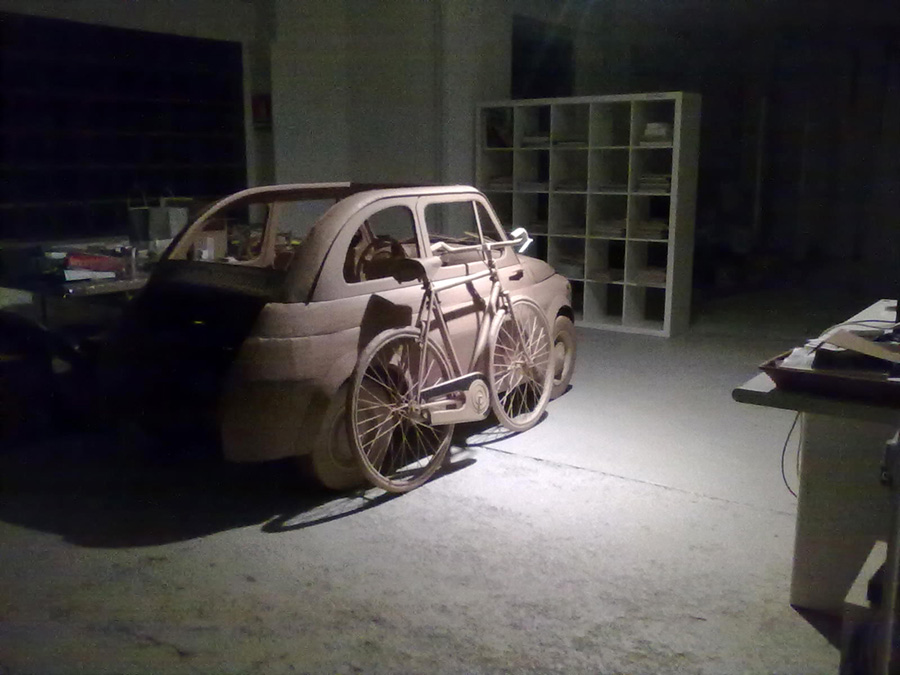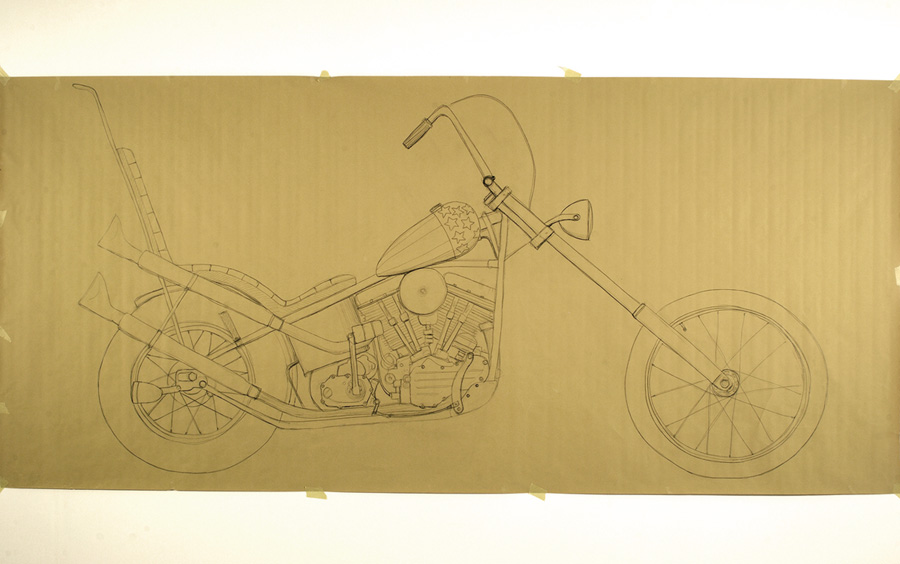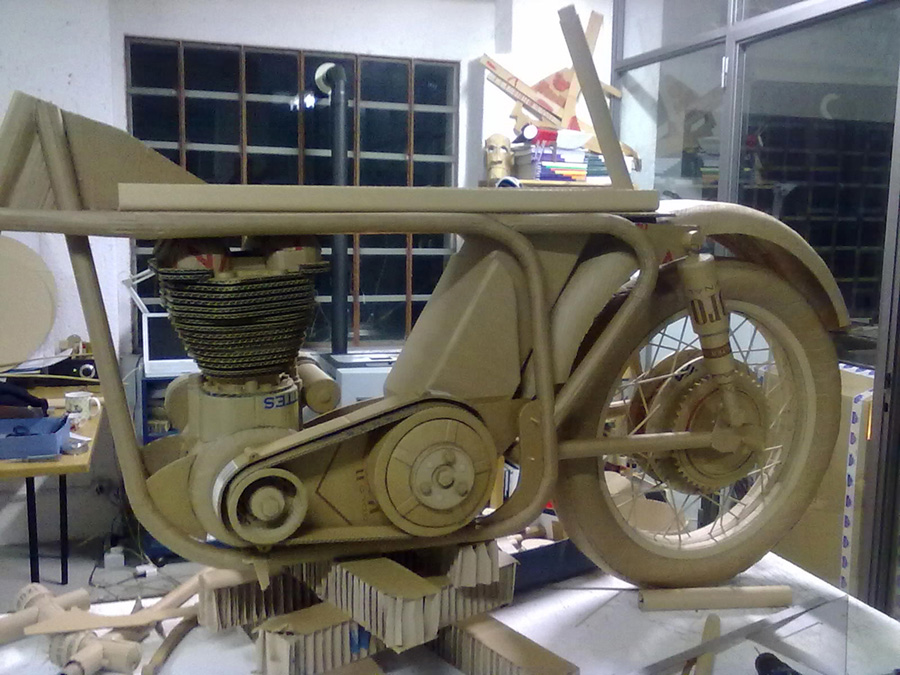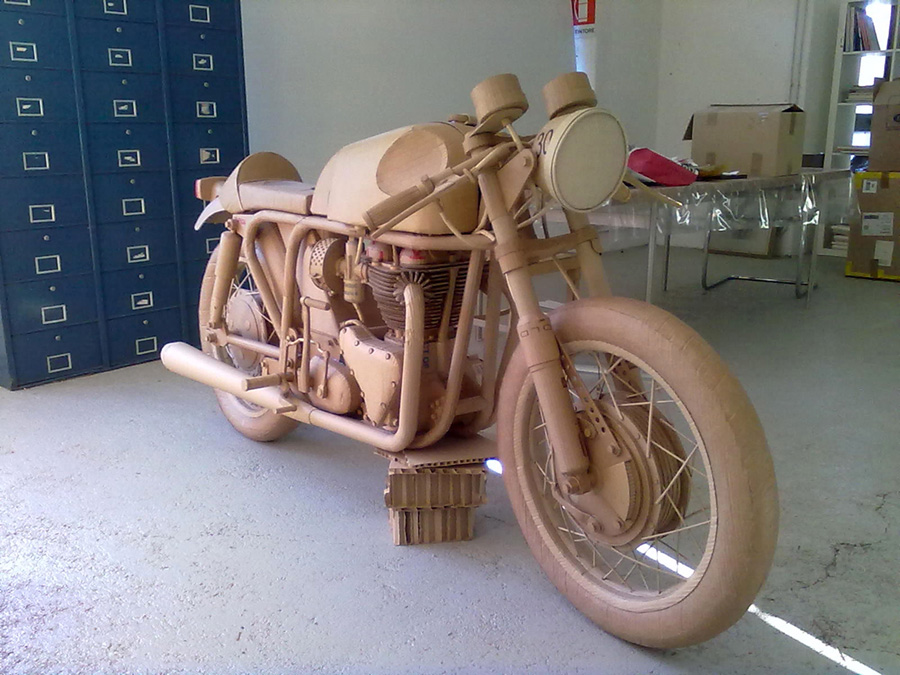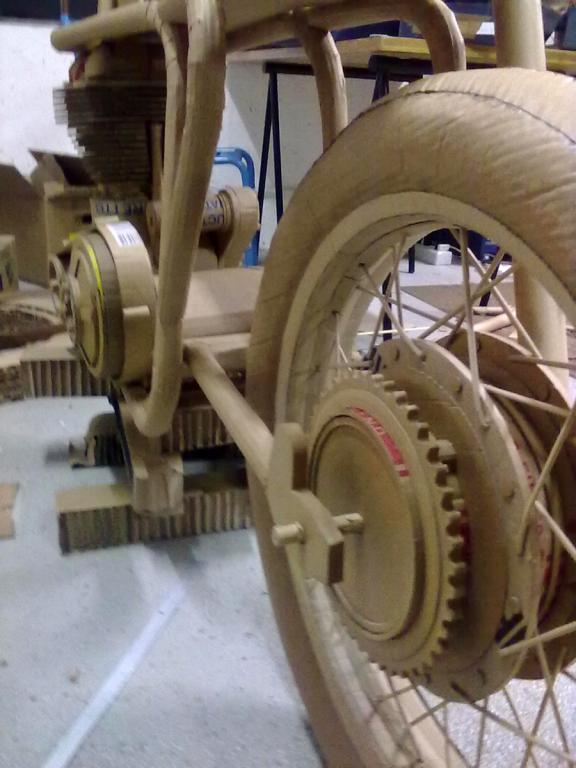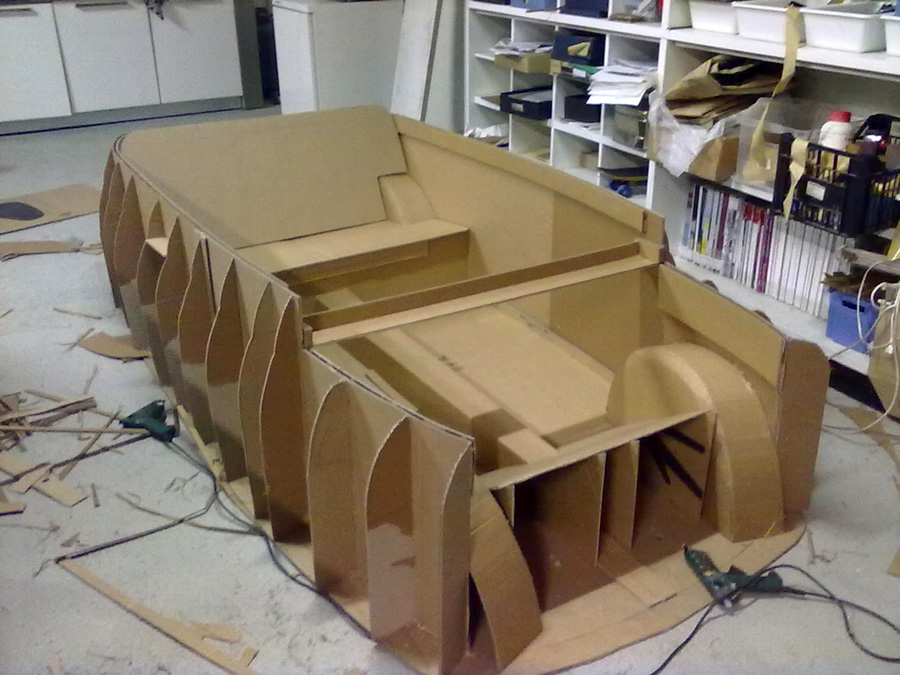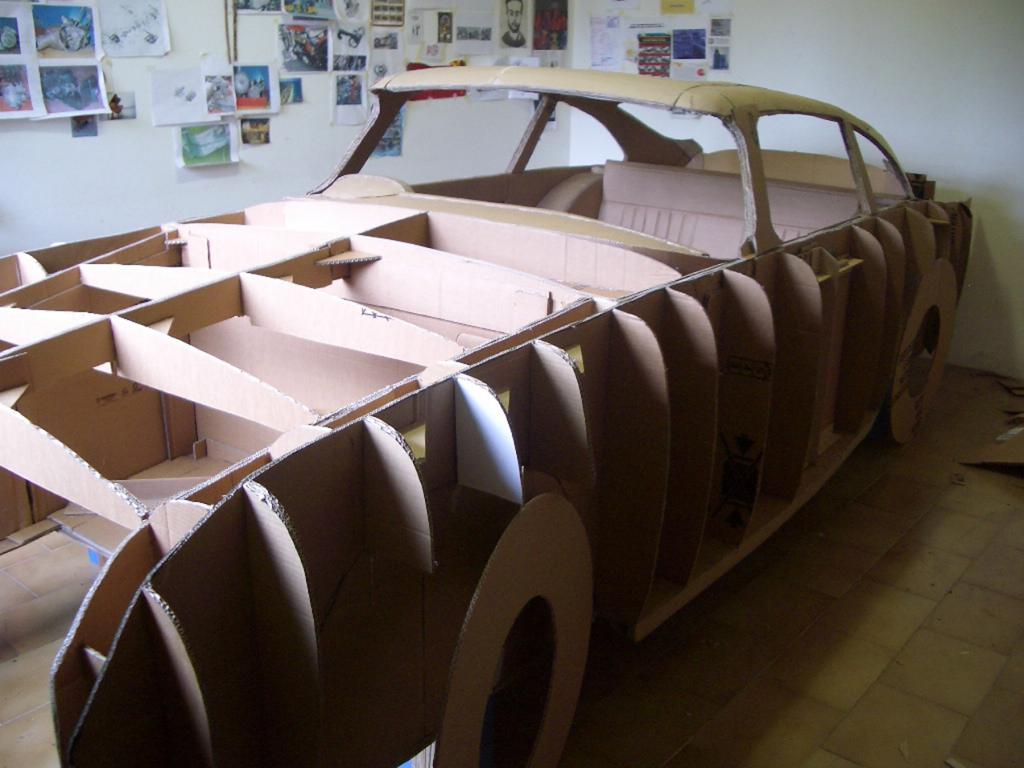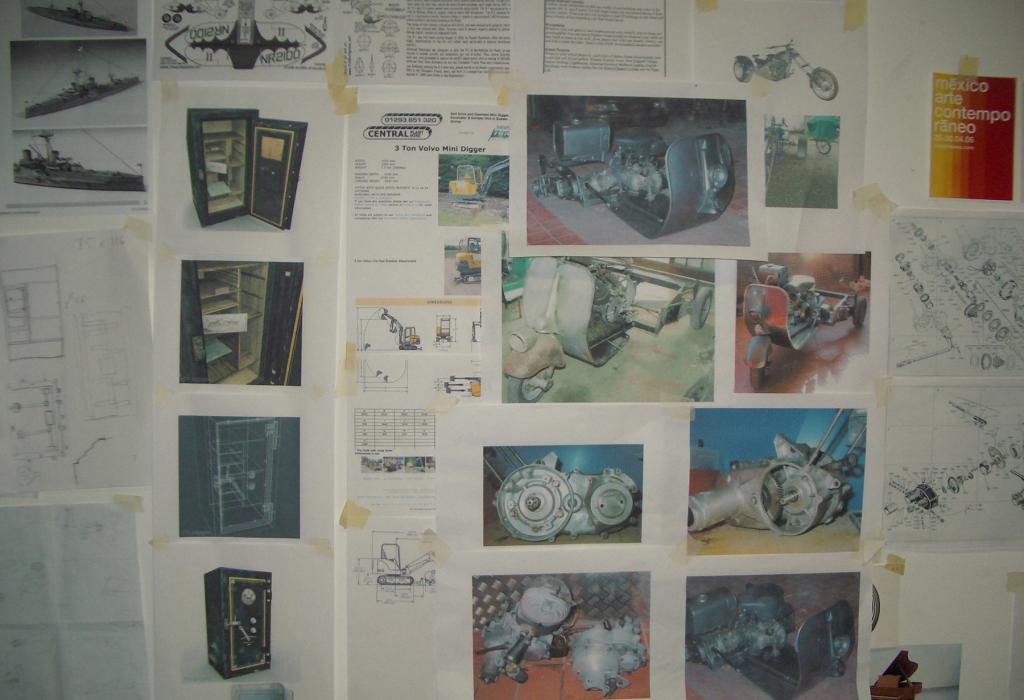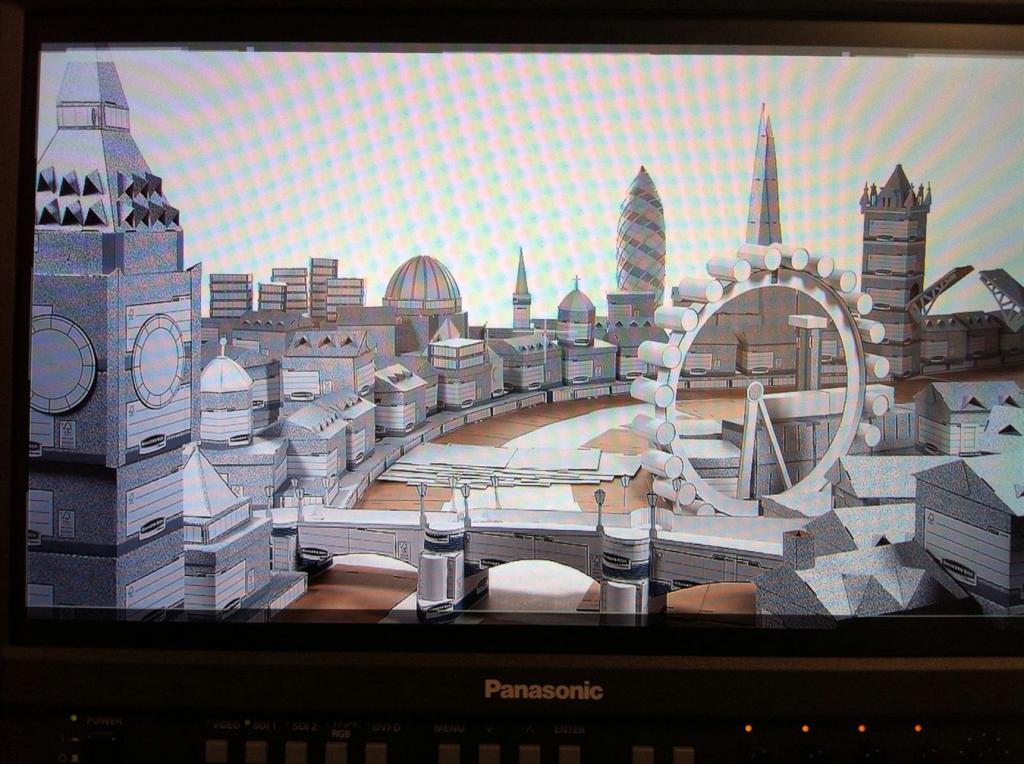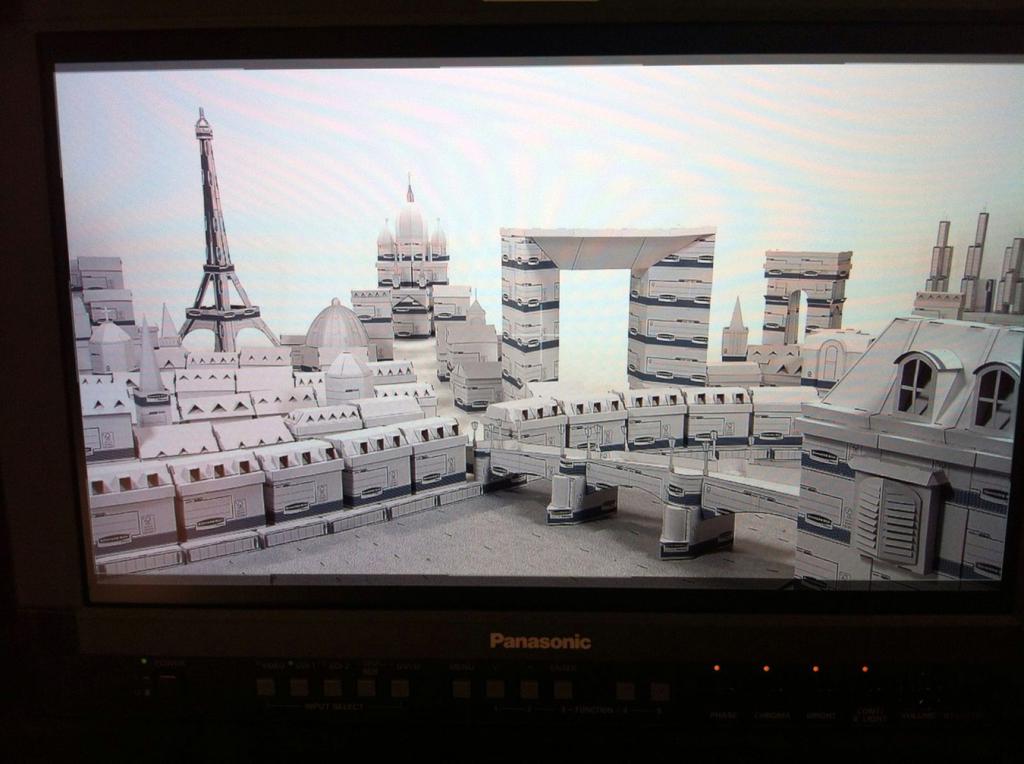Chris Gilmour Hands on
The idea of working with cardboard and recycled materials has always been tied to my work with community and educational projects. I have been teaching and leading projects for over twenty years, working with hundreds of children and adults, and I’m always happy to encourage anyone interested in experimenting with cardboard.
Cardboard is cheap and easy to find, and using simple tools and techniques it is possible to make almost anything… I love the challenge of working with other people to help them realize their ideas.
Here you can see some of the more recent projects and workshops, and get a glimpse “behind the scenes” of work in progress.
Please get in touch if you would like to organize workshops or events, I’m always happy to share ideas and discuss what we can make together.
Interview
1. Describe your work.
I make hyper realistic sculpture using cardboard boxes. The work is all made using only glue and cardboard- there is no supporting structure of wood or metal. The finished works create a remarkable effect where the viewer tries to reconcile the solid physical presence of well known objects with a material which most people think of as light, weak and only meant to be used as a container and then thrown away. There is a concentration on the physical making of the pieces (they are all completely hand made) which calls attention to objects which are often mass-produced, and the choice of objects themselves is tied to an exploration of social and commercial expectations. The work can be seen as a reflection on consumerism and materialism, and as metaphor for transience and impermanence, but it is played out through the evocation of the spirit of an object and the associations it calls up, which makes it very immediate and attractive.
2. What are the ideas behind the objects you are building in your art?
There has been a progression in the choice of objects portrayed, which go from smaller domestic items (like the moka or the typewriter) to objects which are larger and belong to a broader cultural context (the Fiat 500, the Lambretta). However, the reason for the choice of objects has always been pretty much the same- they call up memories and emotions connected to our experience of these (everyday) things and allow me to discuss our relationship with objects and the things we surround ourselves with.
Since this is both a visual and conceptual work I choose objects for their visual appeal and cultural resonance, but I also usually choose objects which imply an action or interaction of some sort. The interaction with the works seems to create a kind of short circuit in the viewer: you want to open the car door, or turn the wheel on the bike, but of course you can’t. It’s an interesting effect to observe and I think this immediacy is important to enter the work, to grab the viewer.
3. Can you explain what draws you to this material?
One of the reasons I am attracted by cardboard is that, although it can be an expensive material, people fail to notice it and just throw it away when buying an object, often slightly irritated at the thought of having to dispose of it. There is a widespread idea of having to leave our mark, of expressing our personality by buying this or that object that will best convey our originality. Almost as if the consumer society had transformed even our personalities into something you can buy.
4. Is it a new way do define the material? Or a metaphor?
Maybe it’s a way of re-appropriating or taking control of the things around us, which if you live in a city are pretty much all man-made. I think the use of re-cycled or found materials is brought about by our proximity to these things and their familiarity. I think it makes perfect sense to use cardboard as a sculptural material. One of the reasons I use it is because it’s so easy to find- we have an immediate access to these “re-cycled” materials in a way that could never be possible with bronze or marble. It also doesn’t have the historical and cultural ties of those classical sculptural materials, and can offer new readings of the work. By using a material which everybody knows and understands, I can build on the associations people already have in their minds to develop ideas and ways of reading the work. It’s a way of creating a language which is understood by many.
5. how do people react to your work?
the sculptures I make are all very realistic, they provoke a strange kind of short circuit in the viewer- they seem to be real and people want to interact with them, but of course they aren’t: you can’t open the door or turn on the motor. People always want to touch them- I think the best example of this was with a wheelchair that was in a show in Milan. The wheelchair is a more disturbing object than, say, a guitar or a bike and nobody wanted to get too close, apart from one elderly gentleman who was so taken with the work that he couldn’t resist trying it… of course the moment he sat on it (and it broke to pieces) the illusion was shattered. It was the end of that piece, but it’s nice to get people so enchanted with the work.
6. What do you love about working with paper?
I like the illusion of reality that is created by my sculptures, they are like the ghosts of objects and without knowing they bring the viewer to a relation with the object which in the end is not there. I also like the juxtaposition of real/not real and the contrast which making very realistic objects in a simple and normally fragile material creates.
7. Is there any political or social intention in your work?
I come from a background of social based art interventions- workshops, community arts, teaching and I think this is still present in my sculpture in a way. There isn’t an overt or specific political or social message, but I do think that the works exist in a context where it might have a broader function which has a social connotation. They might be pieces which provoke a chain of thought, thinking about why they have been made and what they represent or they might be a way of raising the idea of empowerment in the face of materialism or the over-emphasis society places on material possessions. More simply these works might be a consideration of the objects we have around us: the transposition of very realistic objects into an unusual material creates an interference or interface that might bring you to actually look at something carefully and maybe that leads you to think about why and how and maybe that leads you somewhere else…
Euromaxx documentary
